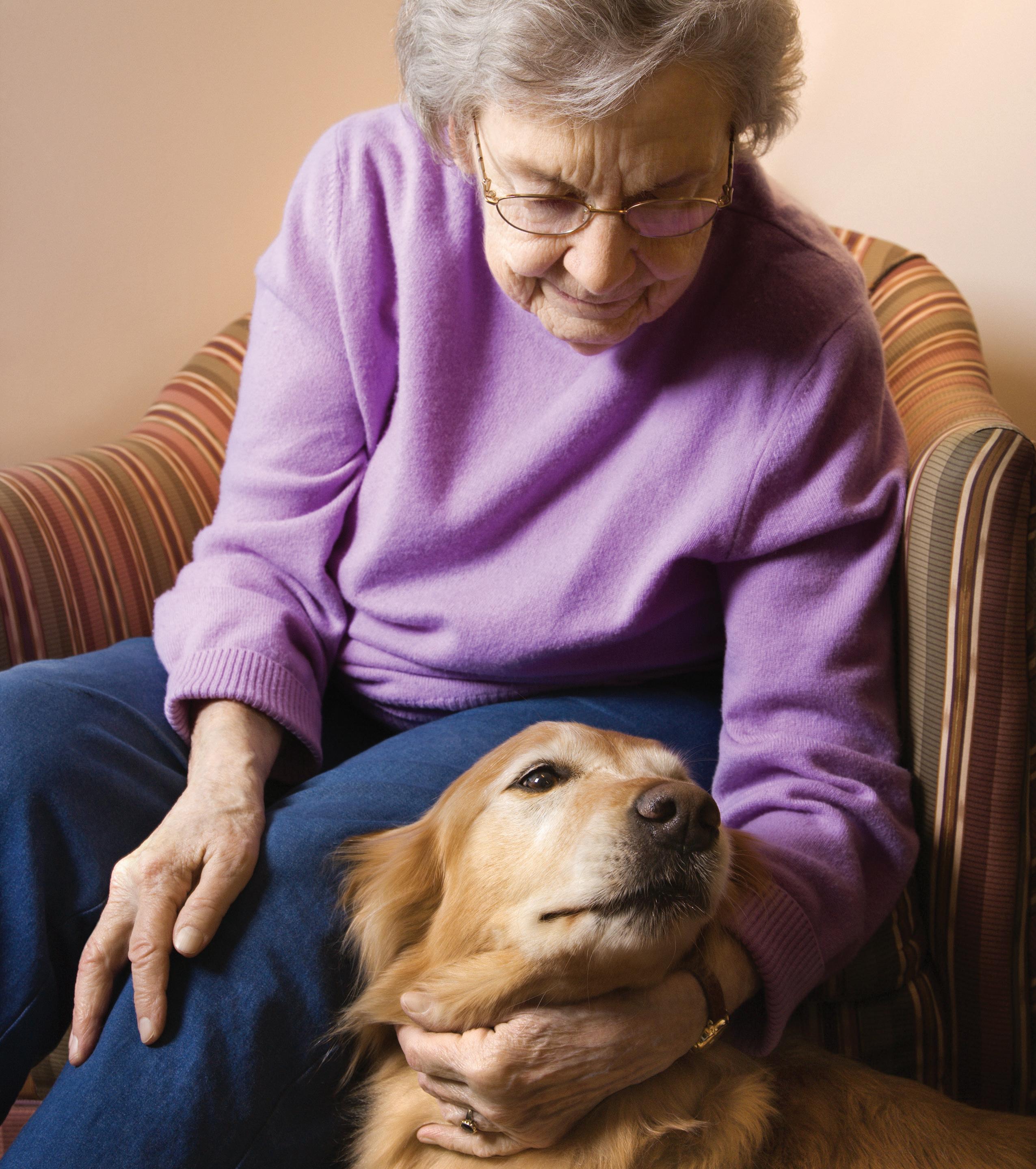
June 2024 carehomemagazine.co.uk



Uplifting cleaning and disinfection for your workplace


Our Disinfectant Mist for hard and soft surfaces, and grease and grime lifting Multipurpose Disinfectant Cleaner are here. Available in a range of beautiful, room-filling fragrances. USE ALL AROUND YOUR SPACE


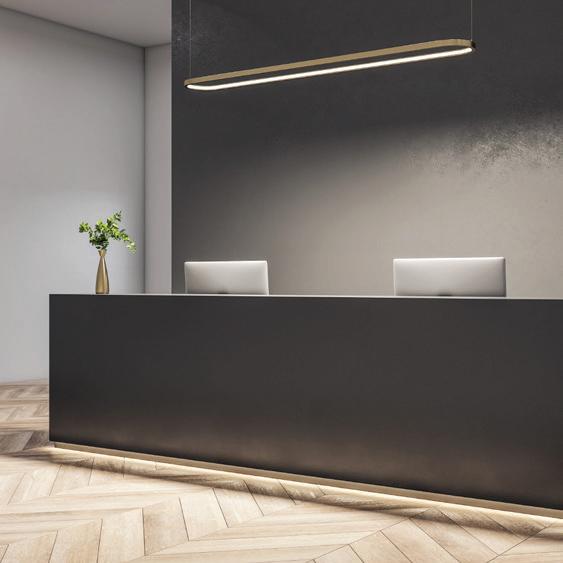

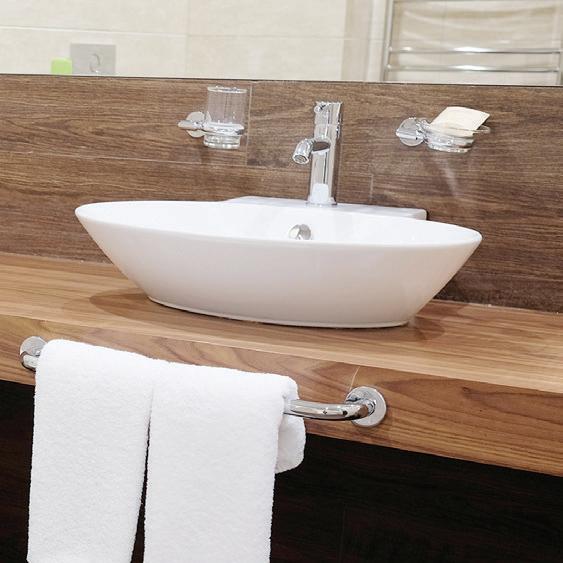




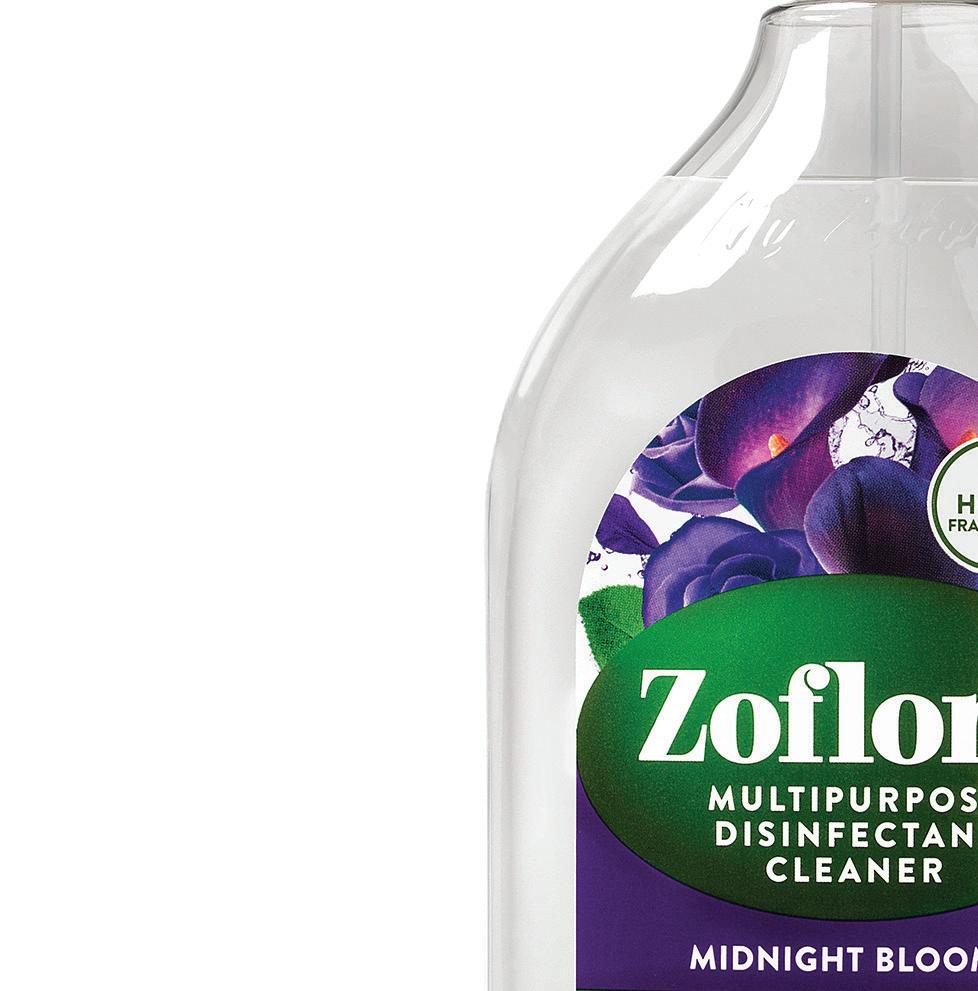











FLOORS



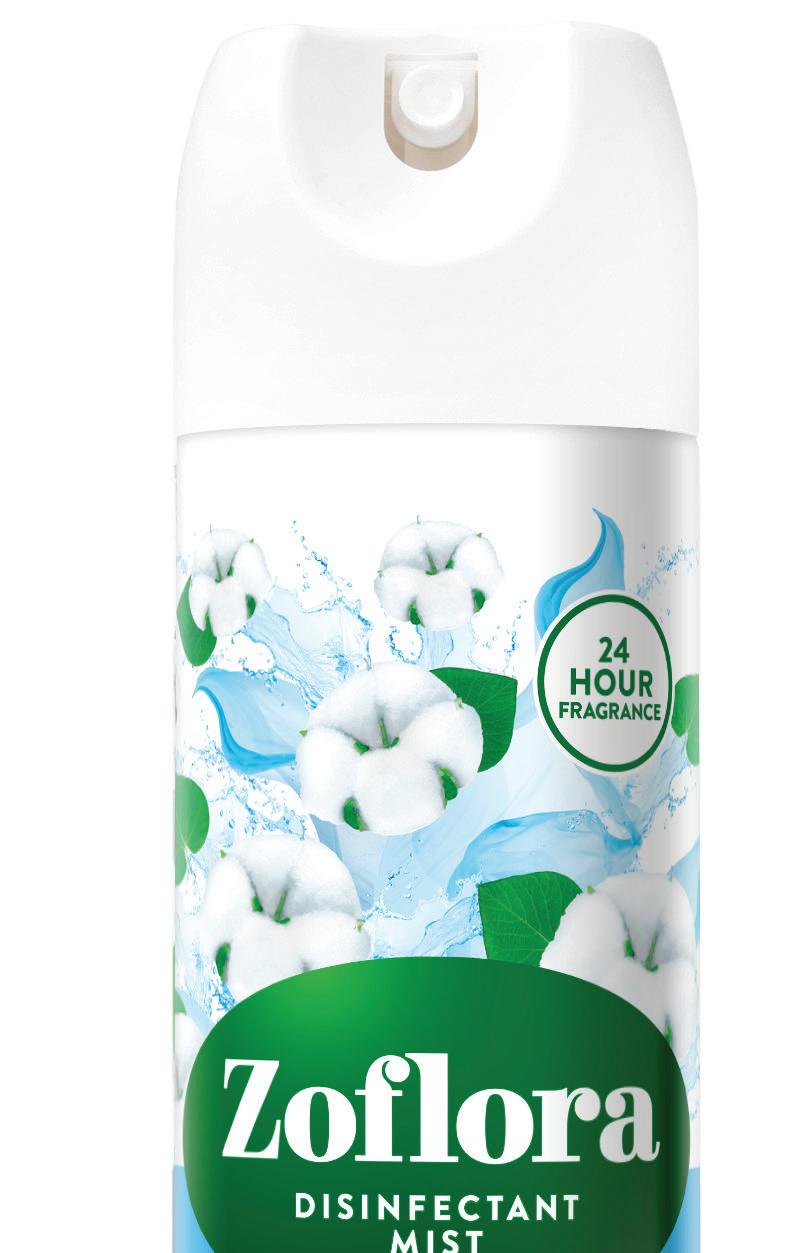
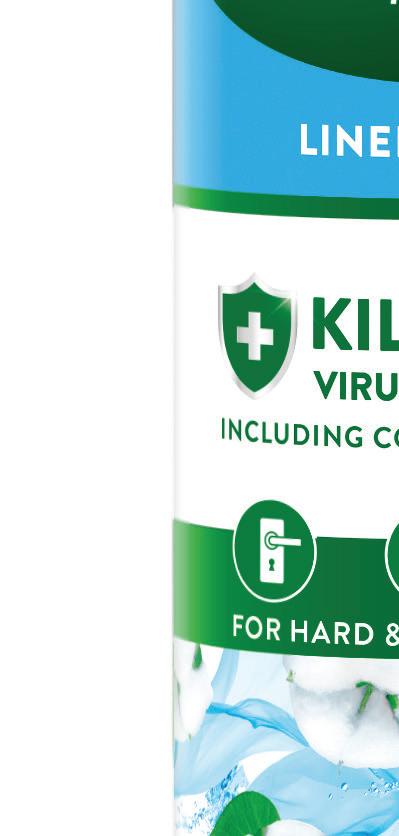


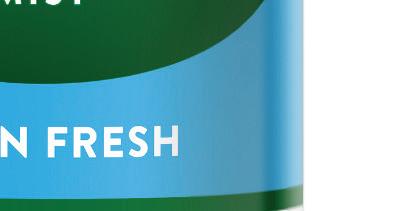



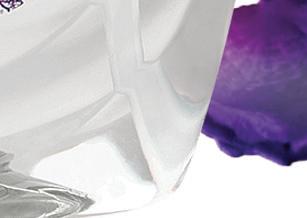
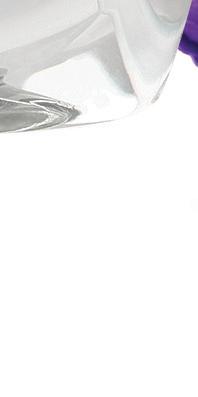





Fill your workplace with beautiful fragrance from the ground up! Add 1 capful of concentrated Zofl ora for every 400ml of water in a bucket and mop over hard fl oors.
SINKS/SHOWERS







Spray and wipe down sinks, taps and shower heads regularly. To eliminate odours, pour a capful of Zofl ora Concentrated Multipurpose Disinfectant down the plug hole after use.



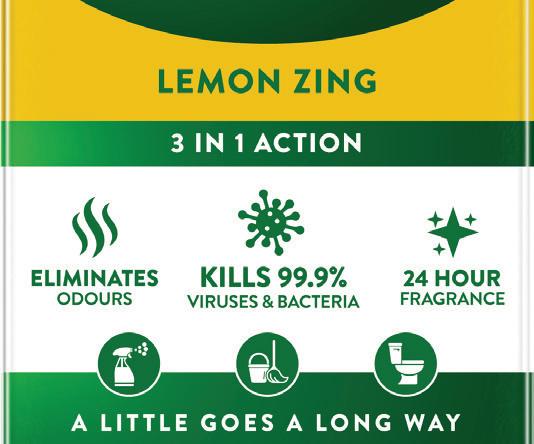

























RECEPTION / SURFACES


Use our Multipurpose Disinfectant Cleaner all around to leave spaces hygienically clean and beautifully fragrant.*
TOILETS
Eliminate germs and keep your toilet fragrant. Leave your toilet brush to soak in Zofl ora Concentrated Multipurpose Disinfectant to keep it clean and fragrant.
























DOORS, HANDLES & BUTTONS
Frequently touched areas can often harbour germs. Deliver a beautiful welcoming fragrance, with our Disinfectant Mist. Regularly spray surfaces to kill 99.9% of viruses and bacteria, including the COVID-19 virus (SARS-CoV-2).
CHAIRS / CURTAINS
Freshen up your soft furnishings with our Disinfectant Mist. Not only will your surface be hygienically clean, but your area will be filled with beautiful fragrance too.* It’s also touch dry in 45 seconds!


NEW
Standard BS EN 14476 2013+A2:2019.
*Zoflora conforms to the latest British
Chief Editor
Jade Evans jade.evans@cimltd.co.uk
Editorial Assistant
Ailsa Newgreen ailsa@cimltd.co.uk
Publication Manager
James Davies jamesd@cimltd.co.uk
Tel: 01795 509 112
Account Manager
Jazmine Davis jazmine@cimltd.co.uk
Tel: 01795 509 112
Administration Manager
Natalie Murray admin@cimltd.co.uk
Tel: 01795 509 103
Credit Facilities
Manager
Gwen Lee
creditcontrol@cimltd.co.uk
Tel: 01795 509 103
Design and Production
James Taylor james@cimltd.co.uk
Grant Waters grant@cimltd.co.uk
Marketing Manager
Lucas Payne lucas@cimltd.co.uk
Social Media Manager
Lily Lawson socials@cimltd.co.uk
Sales Director
Tom Woollin tom@cimltd.co.uk
Chief Executive
John Denning
Editor’s Letter June 2024
Welcome to the June issue of Care Home Magazine! As the warmth of summer envelops us, it’s a time for growth, renewal, and vibrant energy—a perfect backdrop for the themes we’re exploring this month: Therapy Animals and Health and Safety in care homes.

First, let’s talk about therapy animals. The profound impact that animals can have on our wellbeing is well-documented, and in the context of care homes, this impact is nothing short of transformative. From the unconditional love of a therapy dog to the soothing presence of a cat, animals bring joy, reduce stress, and even improve physical health for our residents. In this issue, we delve into future trends – looking at innovations in therapy animal programs. You’ll read about successful programs, hear first-hand accounts from care home staff and residents, and discover practical tips on integrating therapy animals into your own care routines.
Our second focus is on Health and Safety—an evergreen priority that ensures our care environments remain secure and nurturing spaces for everyone. This month, we bring you the latest insights on best practices, regulatory updates, and innovative solutions to common challenges. From infection control to emergency preparedness, we cover a comprehensive range of topics designed to help you maintain the highest standards of care and safety. Experts in the field share their knowledge on innovative technologies for enhancing health and safety in care home settings.
As we navigate these important themes, I am reminded of the resilience and dedication of our community. The commitment to enhancing the quality of life for residents is evident in every story we share and every innovation we highlight.
I hope this issue inspires you, informs you, and reminds you of the incredible impact you have each day. Whether you’re exploring the heartwarming world of therapy animals or ensuring your health and safety measures are top-notch, know that you are making strides towards a brighter, healthier future for those in your care.
Thank you for your continued support and dedication. Together, we are building a compassionate and safe community for all. As ever, we hope you enjoy the read!
Jade Evans, Chief Editor
and when not accepted will be returned only if accompanied by a fully stamped and addressed envelope. Manuscripts should be type written. No responsibility can be taken for drawings, photographs or literary contributions during transmission or in the editor’s hands. In the absence of an agreement the copyright of all contributions, literary, photographic or artistic, belongs to TGM Publishing Limited. The publisher accepts no responsibility in respect of advertisements appearing in the magazine and the opinions expressed do not necessarily represent the views of the Publisher. The Publisher cannot accept liability for any loss arising from the late appearance or non publication of any advertisement.
© 2024 TGM Publishing Limited, 1st Floor, Saphir House, 5 Jubilee Way, Faversham, Kent, ME13 8GD. No part of this magazine may be reproduced or stored in a retrieval system or transmitted in any form – electronic, mechanical or physical – without express prior permission and written consent of the publisher. Contributions are invited
carehomemagazine.co.uk 4
Table of Contents
6 Industry Update
Providing insights into what’s currently happening within the care sector, we share some of the latest news.
9 Therapy Animals
Looking ahead, we delve into future trends surrounding therapy animals as we delve into innovations in programs.
18 Activity of the Month
In this instalment, we look at the benefits of introducing flower arranging to your care home.
22 Dishing Up
This month’s recipe is provided by V for Life (VfL) highlighting how you can make easy and fulfilling meat-free meatballs.
24 Business
A piece from the University of Bristol shares details on a research project launched to find out about labour supply and demand in older adult care.
28 Health and Safety
We highlight a range of innovative technologies for enhancing health and safety in care home settings.





10 16 22 28 38 carehomemagazine.co.uk 5
Industry update
Care UK’s triple triumph at the Berkshire Care Awards
Three Care UK colleagues are celebrating after winning awards at the 2024 Berkshire Care Awards. The Berkshire Care Awards are a celebration of Excellence in Adult Social Care across Berkshire, highlighting the commitment, dedication, and achievements of colleagues across the county.
Newbury Grove are celebrating a double success, with Adriano Goncalves De Carvalho, Head Chef, winning the Care Home Chef Award, and Sandra Vilaca, Activities Lead winning the Activity Coordinator Award.
Something that won the judges over was Adriano’s dedication to supporting residents’ nutritional wellbeing through a system he created which tracks the progress, preferences, and dislikes of each resident. This includes tracing residents’ dietary requirements and
whether or not they require puréed foods. This system is used both in the kitchen, and to assist with clinical needs.
Sandra has been with the home since it opened eight years ago, and by working closely with activities colleagues and members of other teams, she has instilled a positive environment where residents have the freedom to pursue interests and activities that fulfil their lives. The result is a plethora of clubs ranging from reading to gardening, and activities such as bingo and pub quizzes.
Shirley Summerbell, Home Manager at Care UK’s Winchcombe Place, won the Leadership Award. Shirley is committed to encouraging the development of home champions in specific areas, such as dementia, medication, dysphagia, and end-of-life care.
Goole Care Home Appoints New Manager
Aleading social care group in Yorkshire has appointed a new manager at one of its care homes in the region.
Ed Robinson joins Prospect House in Goole, which is owned and managed by HICA Group. He brings a wealth of knowledge and expertise to the role and his extensive background in social care and positive behaviour support will enhance the home’s personcentred approach to care.
Prospect House provides highquality care and support to adults with a learning disability with services tailored to the individual needs of its residents. The facility specialises in supporting those with complex needs and takes a holistic approach to ensure every resident is given the appropriate care they need to achieve their full potential.
Terry Peel, HICA Group’s CEO, said: “Bringing Ed on board is a fantastic development for the team at Prospect House and the HICA family. His proven track record in delivering exceptional care aligns perfectly with our mission to provide outstanding and innovative support services. We’re excited for the future of Prospect House under his leadership. Welcome to the team, Ed.”
Ed previously worked at Moorview Care in Hull and his qualifications in social care and Positive Behaviour Support (PBS) equip him with the necessary tools to drive Prospect House towards even greater accomplishments in care.
Talking about his appointment, Ed added: “Joining the Prospect House team as manager is a privilege and a great responsibility.


“I’m eager to bring my passion for social care and positive behaviour support to enhance our residents’ lives. Together with the dedicated staff here, I look forward to building on the excellent standards of care and making a positive impact in the community.”
For further information about Prospect House and HICA Group, visit: www.hica-uk.com
carehomemagazine.co.uk 6
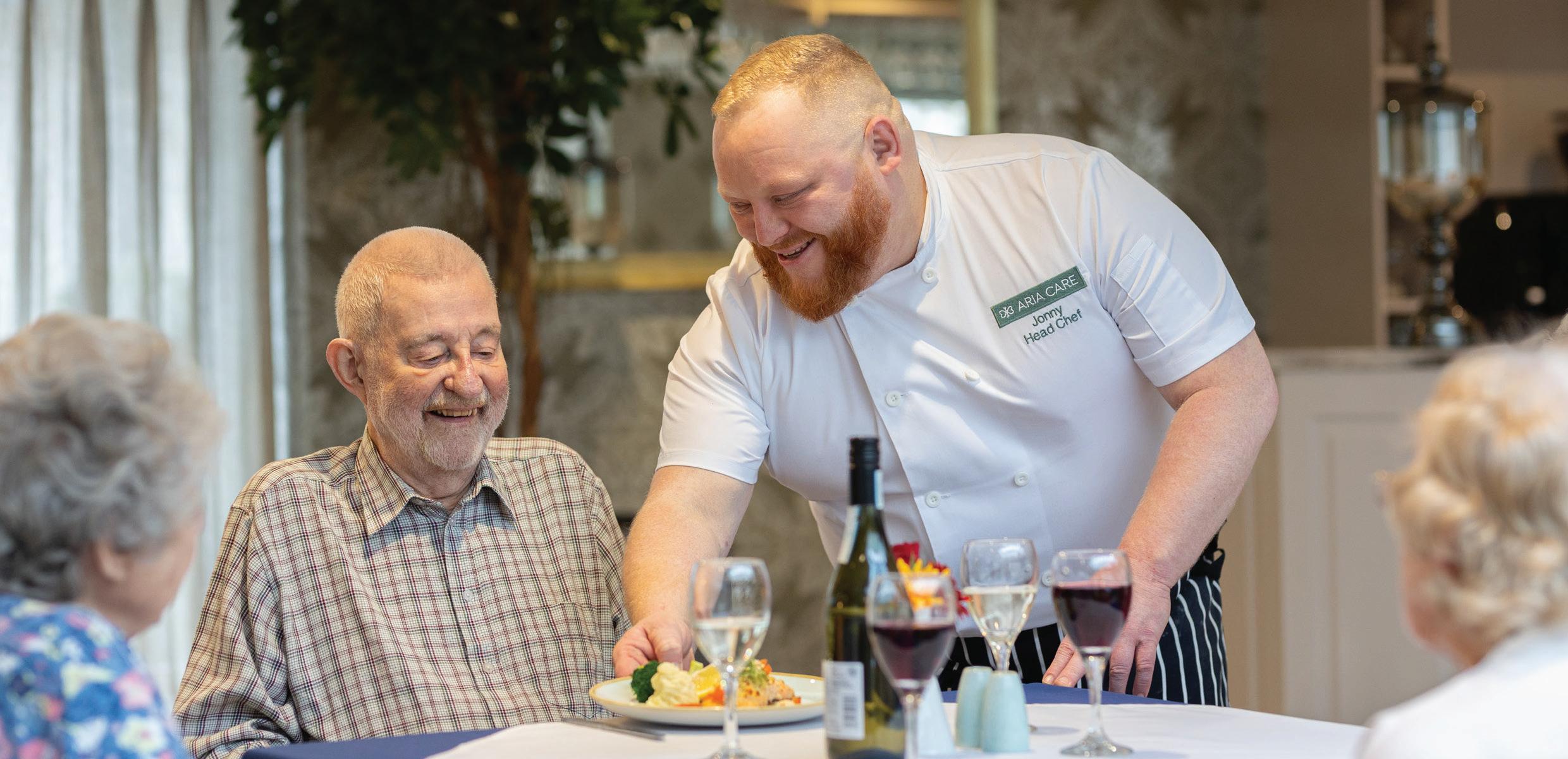

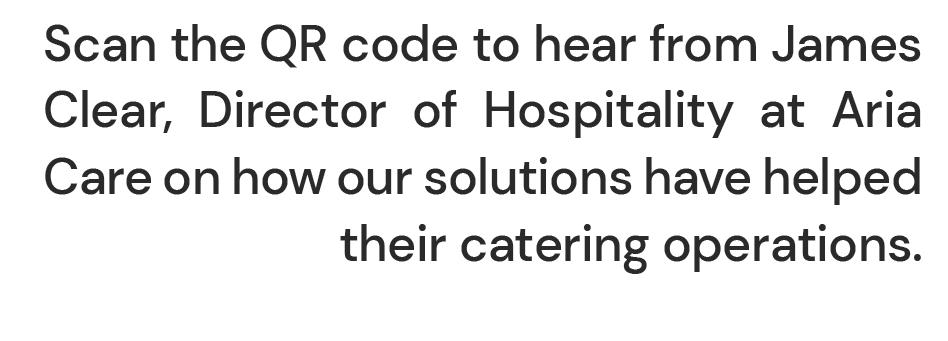

A New Approach
Essex County Council pilots hybrid care service that creates new virtual carer role.
TEC Innovation Lead for Essex County Council, Natasha Corness, is piloting a new hybrid care model with four domiciliary care providers, which includes a blend of face-to-face visits and virtual care for its citizens.
Natasha outlines how the new service works using technologyenabled care (TEC) on the latest episode of The Access Group’s ‘Redefining Care’ podcast: “We’re looking at what can be done virtually or via telephone rather than requiring a face to face visit. For example, prompting medication, supporting people with low level anxiety, or helping people with shopping. Then using face to face only for those that need it.”
She believes that TEC offers a new approach to social care that favours risk management over crisis intervention: “We can’t keep intervening when things reach a point of crisis. It’s costly and resource intensive. Technology offers a lighter touch intervention model that enables someone’s care to be assessed over time and allows us to take a step back before
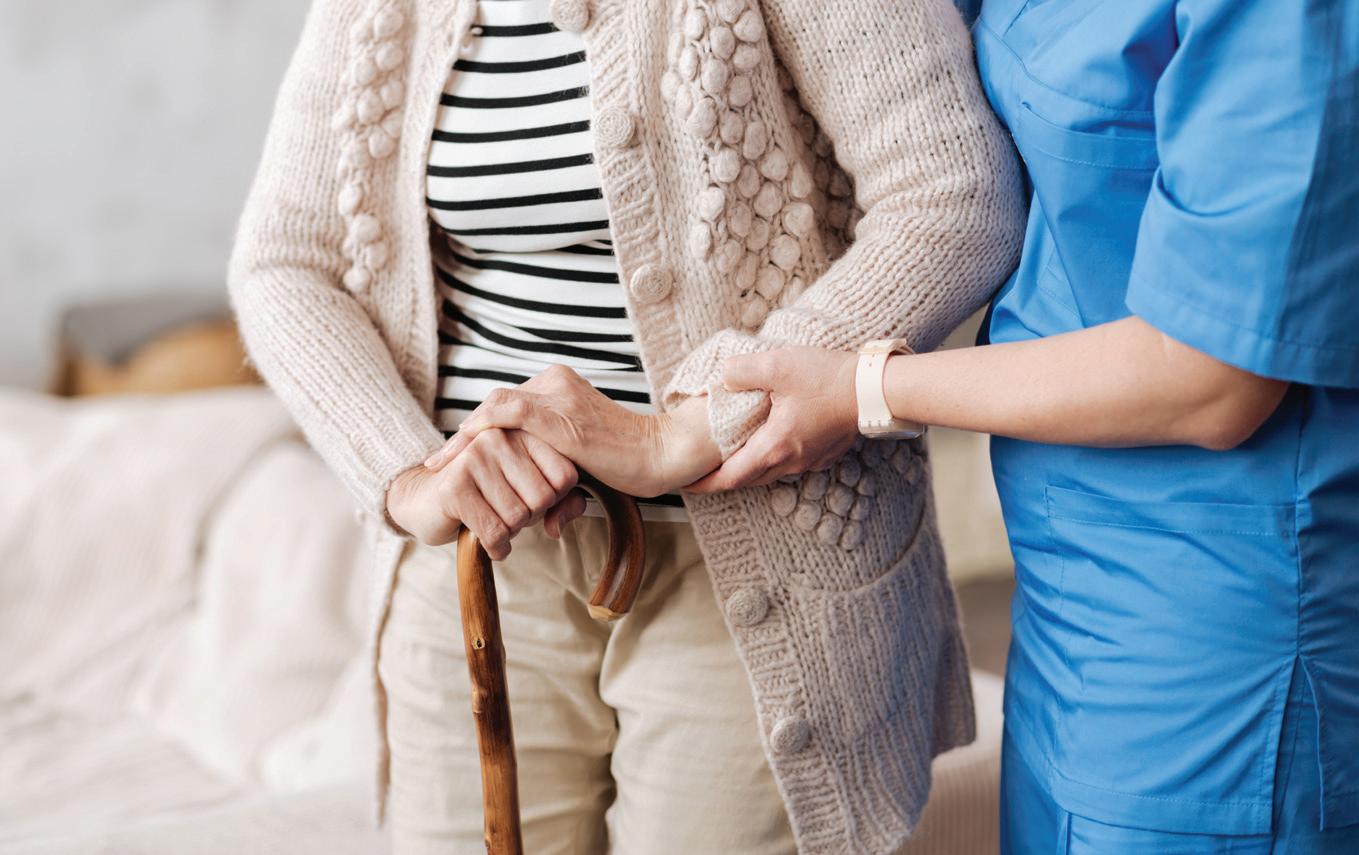
making hasty or costly decisions.
“In the words of Desmond Tutu, there comes a point where we need to stop pulling people out of the river at the bottom and go upstream to find out why they’re falling in.”
This type of hybrid model will also create new virtual carer roles that offer an attractive career path for people who might not otherwise have considered a career in care, explained Natasha: “This creates an opportunity for young
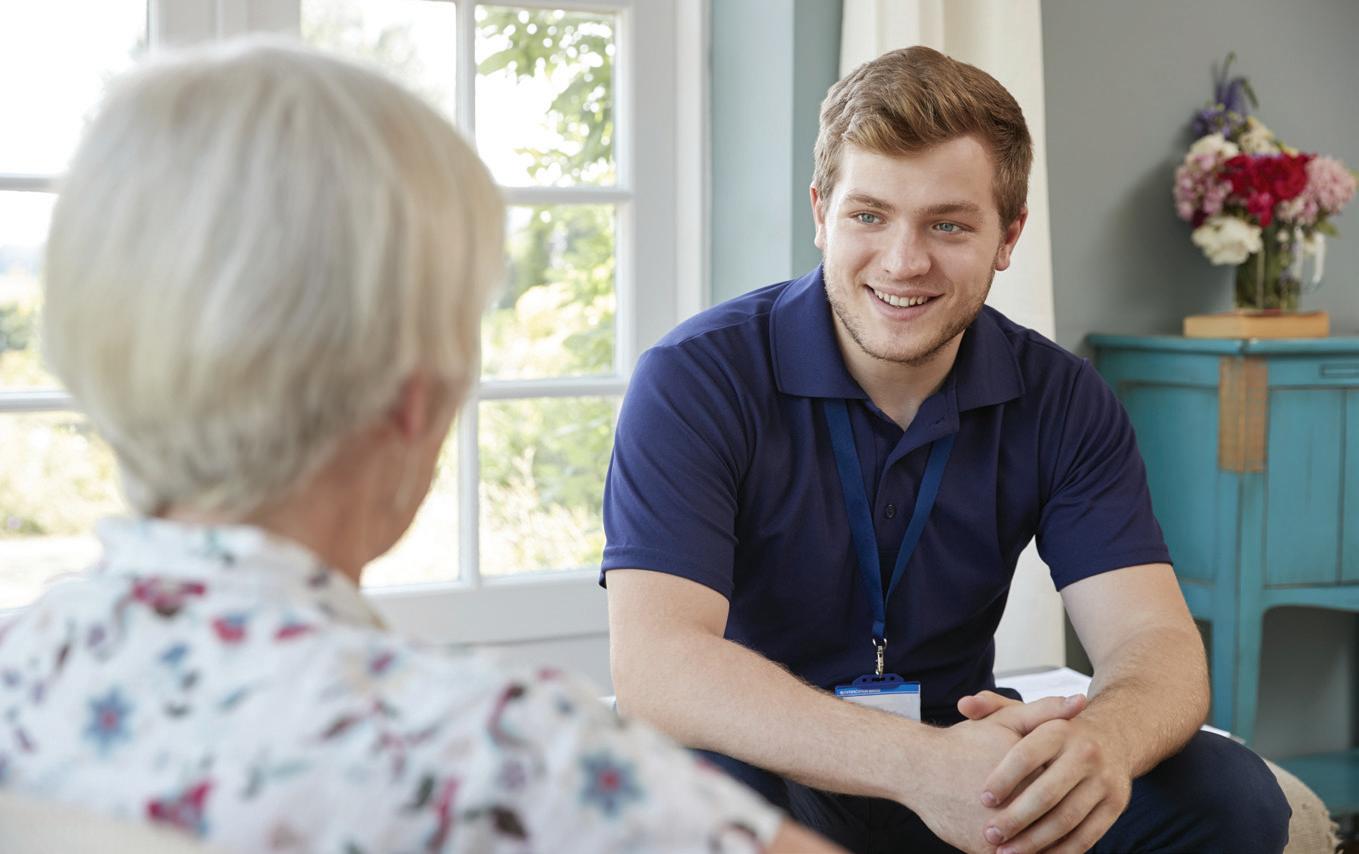
people to use their digital skills to help the older generation and give something back to society.
Likewise, she said it gives people an option to join the sector earlier:
“Carers can harness their people skills differently - befriending and supporting people through Teams or Zoom, without having to travel to see them. Young students can enter the sector without needing a driving licence and fit their work around college commitments.”
Touching on the broader benefits of technology, Natasha added: “There are already great uses of artificial intelligence and robotic process automation in the sector to streamline processes and save time. This helps to ease workforce pressures and deliver higher quality outcomes for people. Looking to the future, predictive analytics can leverage our data to help us think differently and make more informed decisions.”
Natasha Corness is the twelfth guest on the podcast. The next guest will be Neil Grant, Partner at the law firm, Gordon’s Partnership.
www.theaccessgroup.com
BUSINESS
carehomemagazine.co.uk 8

Therapy Animals
carehomemagazine.co.uk 9
Paws For Thought
Assessing future trends in care, with the help of industry experts, we look at innovations in therapy animal programs and the effects they can have on your home.
In recent years, the integration of therapy animals into care home environments has garnered increasing attention for its potential to enhance the wellbeing of residents. These programs, which involve regular visits from trained animals and their handlers, have shown promising results in reducing anxiety, alleviating symptoms of depression, and improving social interaction among elderly residents.
As the demographic shift towards an aging population continues, innovative approaches to elder care are essential. This article explores the latest innovations in therapy animal programs, examining how these initiatives are revolutionising care home experiences and significantly impacting the quality of life for residents. From advanced training techniques to the use of diverse species, these innovative practices not only provide emotional support, but also foster a sense of community and joy within care home settings.
One notable advancement

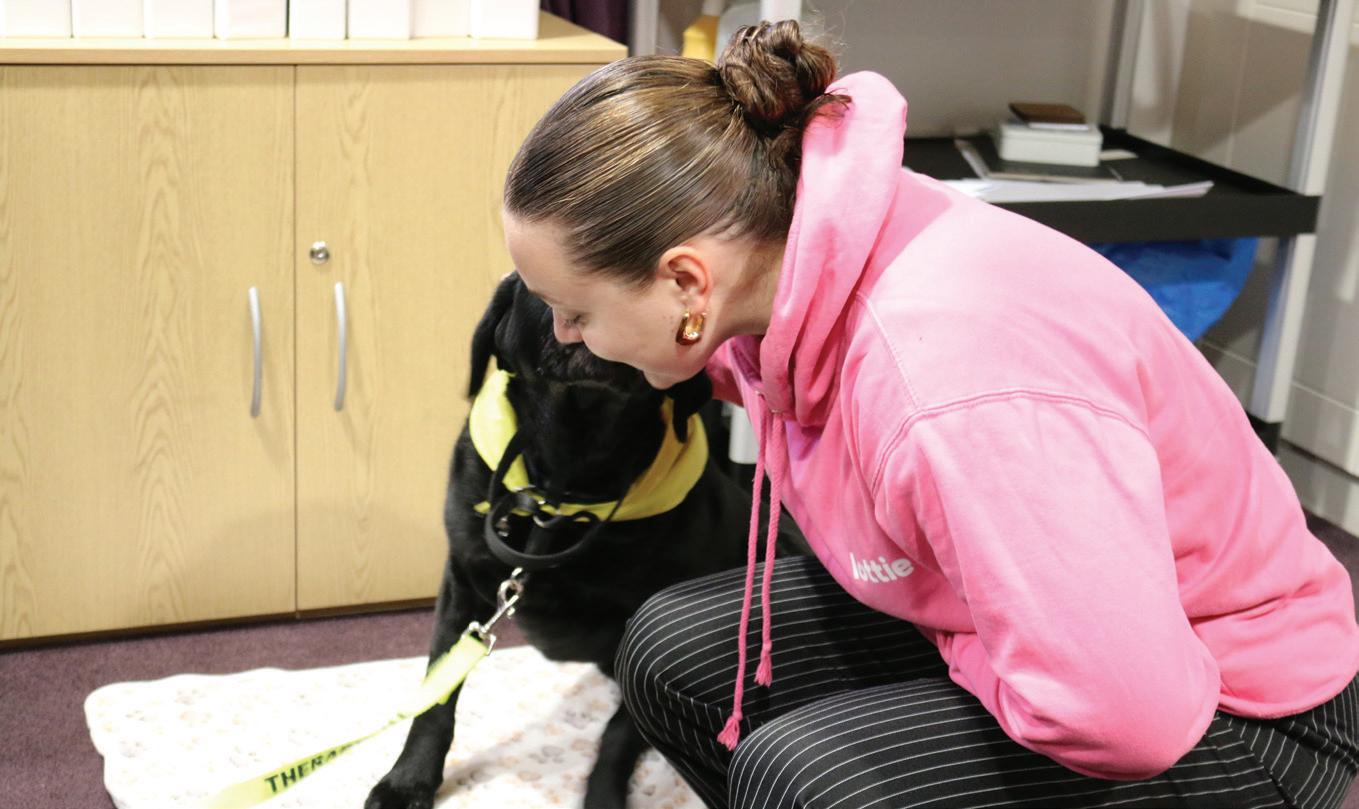
The spectrum has broadened to encompass a menagerie of creatures.
involves the integration of technology, where virtual reality simulations allow patients to interact with therapy animals remotely, providing comfort and companionship even in situations where physical presence isn’t possible. Furthermore, the use of specially trained therapy animals in teletherapy sessions has shown promising results, offering a unique form of support to individuals receiving mental health treatment within the comfort of their homes.
There’s also a growing emphasis on diversifying the types of animals involved in therapy programs, recognising the therapeutic benefits of interacting with a wide range of species beyond just dogs and cats. These innovations are not only expanding access to therapy animal services, but also enhancing the effectiveness and inclusivity of care within the sector.
Traditionally, dogs were the
mainstay in therapy animal programs, cherished for their loyalty and comforting presence. However, the spectrum has broadened to encompass a menagerie of creatures, including cats, rabbits, guinea pigs and even miniature horses. These furry, feathered or hoofed companions bring unique therapeutic benefits, catering to different preferences and fostering a sense of connection and joy among residents. From the gentle purring of a cat to the soft nuzzle of a miniature horse, each interaction provides comfort, reduces stress and encourages social interaction, enriching the lives of those in care homes. As these programs continue to evolve, the range of animals involved reflects a commitment to holistic and personalised care, recognising the profound impact of animal-assisted therapy on emotional well-being and quality of life.
THERAPY ANIMALS
carehomemagazine.co.uk 10
Sheila Griffiths who recently moved into HC-One’s Stoneleigh Care Home in Annfield Plain, recently found a new furry friend. Sheila, who moved into the residential and residential dementia care home in February 2024, needed a little extra support when settling into the home. Sheila’s family, with help from colleagues at Stoneleigh, arranged to try Pet Therapy through Wag & Company. Wag & Company are a charity organisation who offer a befriending service for dog lovers, in the North East of England.
Pet therapy was brought in for Sheila to try and support her with loneliness in a bid to help her settle into Stoneleigh. Sheila was delighted to meet Ebony, the tiniest of dogs, and she instantly fell in love with her and really wanted to keep her.
Ebony is the smallest visitor Stoneleigh has welcomed. Pet therapy is excellent for dementia residents who have previously had their own pets, as it provides the opportunity for residents to reminisce and share fond memories of times spent with their own pets.
After the session ended, Ebony’s owner came to tell Stoneleigh colleagues and residents all about the services available at Wag & Company, and an agreement was made that every fortnight Rebecca would bring Ebony to see Sheila and other residents.
The service is free, with support provided by volunteers who are
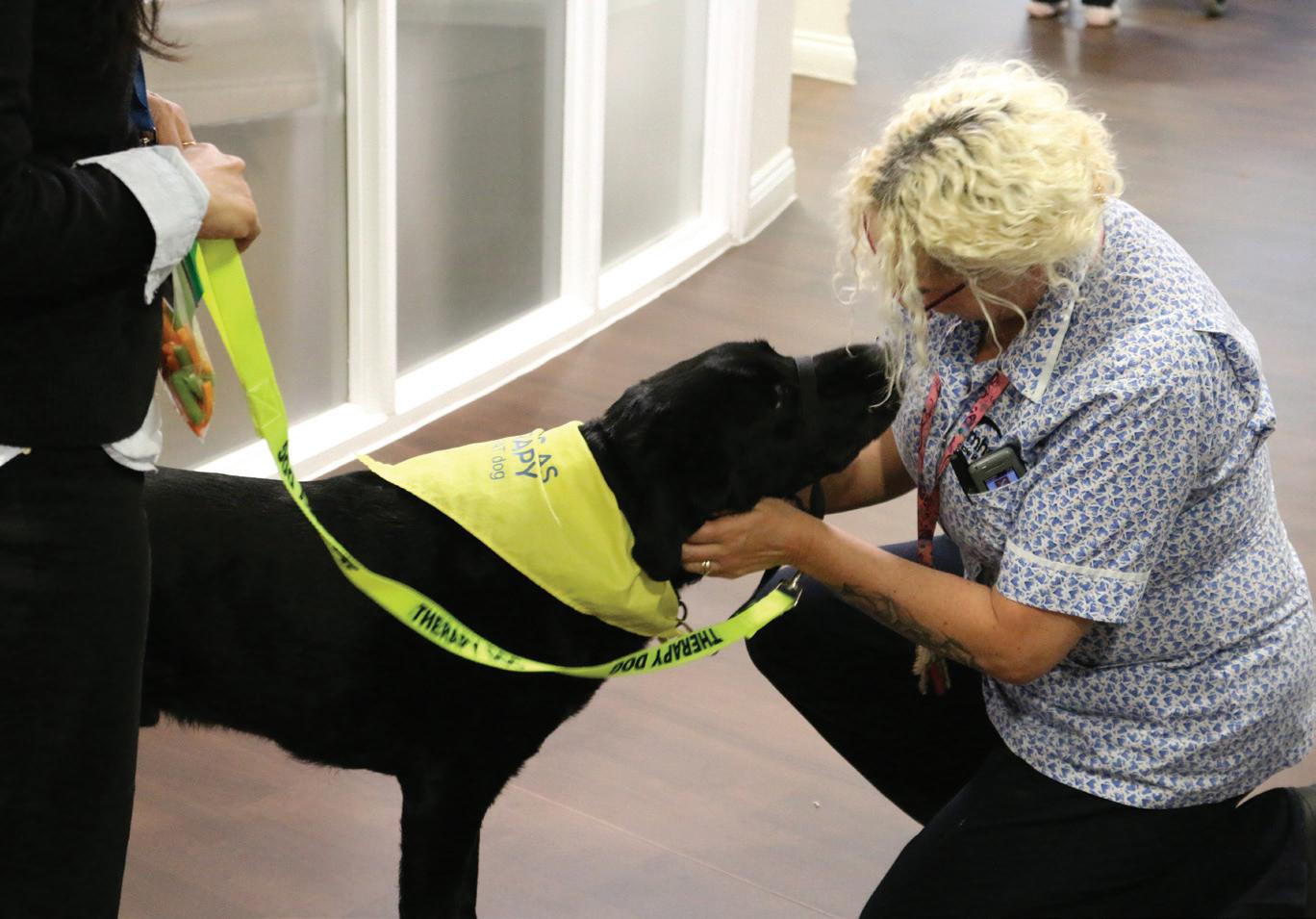
The range of animals involved reflects a commitment to holistic and personalised care.
willing to spread a little happiness to those who would find comfort with the love from a therapy dog. Sheila had the best time when Ebony came to visit. She said to Rebecca, Ebony’s owner, “I really like her; can I keep her please?”
Susan Dodds, Home Manager at HC-One’s Stoneleigh Care Home, commented, “Our residents love pet therapy sessions and they have a number of positive benefits for our residents, including improving their wellbeing.”
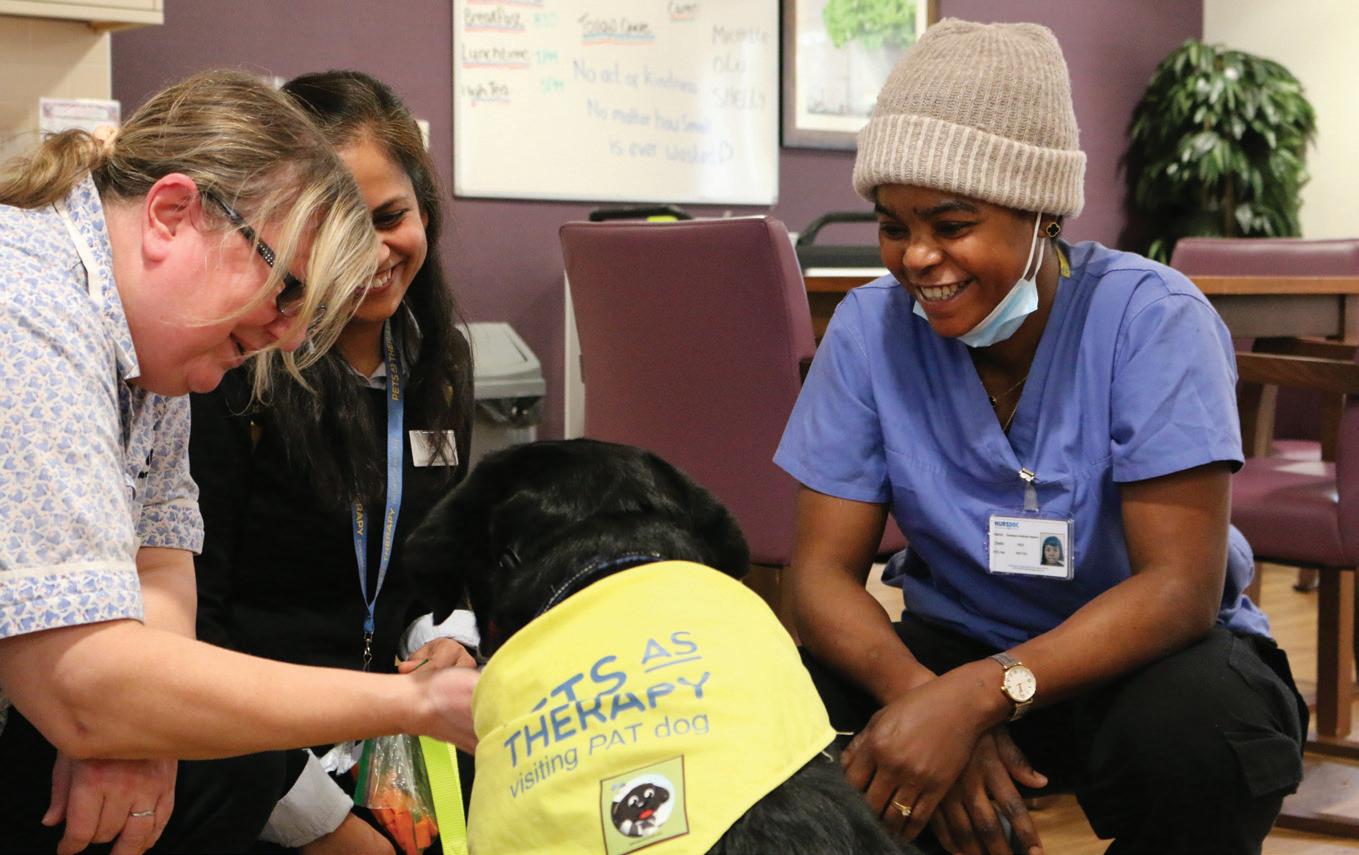
It’s important to note that animal therapy doesn’t always have to come at an extra cost. Involving pets directly from within the care team eliminates the need for external providers, thereby reducing costs and administrative burdens. This approach not only enhances the emotional wellbeing of residents, but also strengthens the bond between carers and those they look after, creating a warm and supportive atmosphere within the care home.
Through the innovative use of animal-assisted interventions, animal therapy programs have shown remarkable potential in fostering emotional, social and physical benefits for elderly individuals. From reducing feelings of loneliness to improving mood and overall quality of life, the positive effects are undeniable. As we continue to explore and expand upon these innovative therapies, it’s clear that the bond between humans and animals holds immense therapeutic power, creating brighter and more fulfilling experiences for residents in care homes around the world.
THERAPY ANIMALS carehomemagazine.co.uk 11
Round of A-Paws
In line with recognising the effects animals can have on resident’s wellbeing, the Orpington care home Foxbridge House recently hired a canine relations manager.
Acare home in Orpington has officially welcomed a new team member – and she’s set to be a paw-some hit with residents and colleagues alike.
Mia, a chihuahua, has joined the team at Care UK’s Foxbridge House, on Sevenoaks Road. In her appointed role, Mia will oversee ‘canine relations’ at the home and be on hand for residents to fuss, walk, or simply spend time with on a regular basis.
The home created the parttime role after being inspired by the positive impact animal visits have had on care home residents’ wellbeing.
Having a dog in the home encourages residents to get outdoors, walking their canine companion, leading to physical benefits, while also helping them feel a sense of purpose later in life.
The friendly pooch has even developed her own management style, taking tours of the home and checking in on everyone – as well as helping to bring back happy memories of pets in younger years for many residents.
Stella Barnes, Home Manager
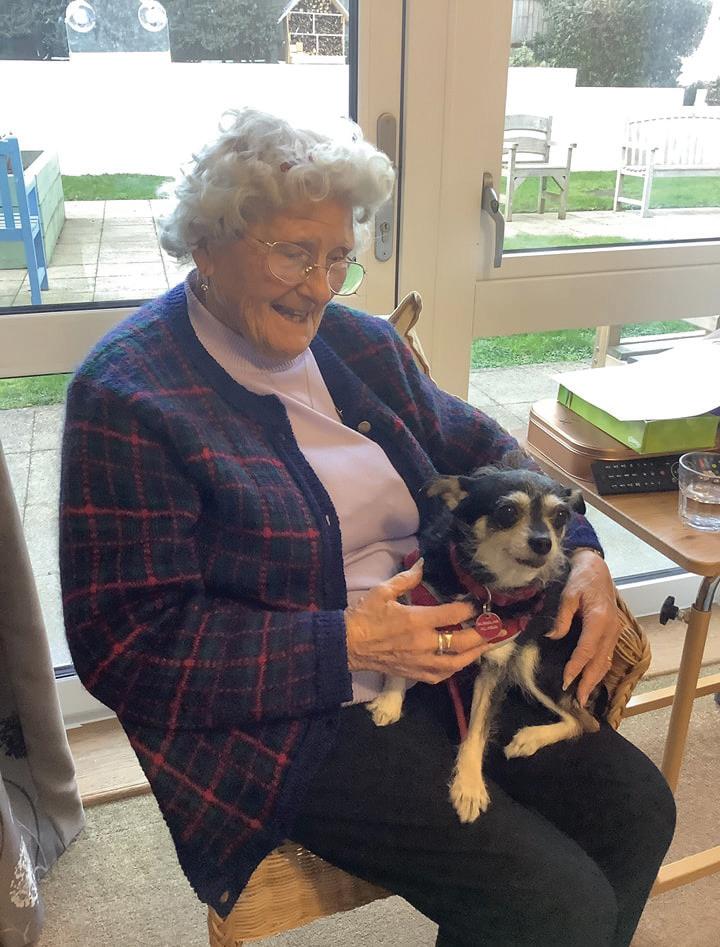

Animals have a wonderful way of promoting wellbeing and can have many amazing benefits on older people.
at Foxbridge House, said “We spotted other Care UK homes have appointed their own Canine Relations Manager and just knew we had to give Mia the official title here at Foxbridge House.
“Animals have a wonderful way

of promoting wellbeing and can have many amazing benefits on older people, increasing mood and social interaction. It’s always a good day when Mia is in the home – for both the team and residents – and residents always have lots of lovely stories to share from their own childhood pets.
“We’re thrilled to be recognising the positive impact Mia has had here at Foxbridge House – the home wouldn’t be the same without her!”
The introduction of a new therapy pet to the care home has been a profoundly positive experience for both residents and staff. This initiative has proven that the simple act of integrating a therapy animal into a care home can foster a more vibrant, connected, and supportive community.
THERAPY ANIMALS
carehomemagazine.co.uk 12


Care Home of the Month The Oaklands, Warsop
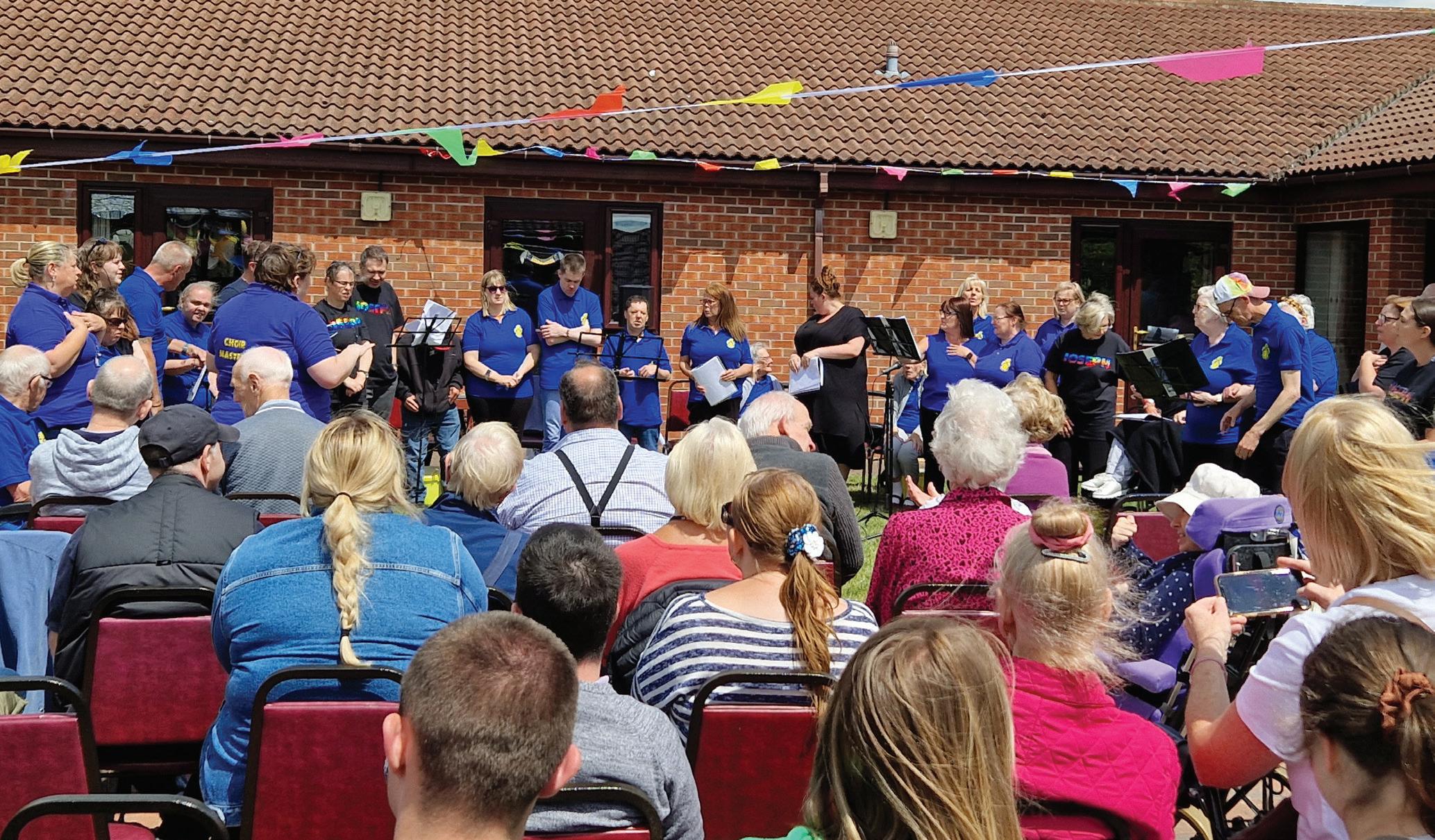
Oaklands Care Home aims to provide its residents with the highest possible standard of care, through an approach designed to meet residents’ individual needs and preferences.
The home offers 24/7 residential care and is registered with the
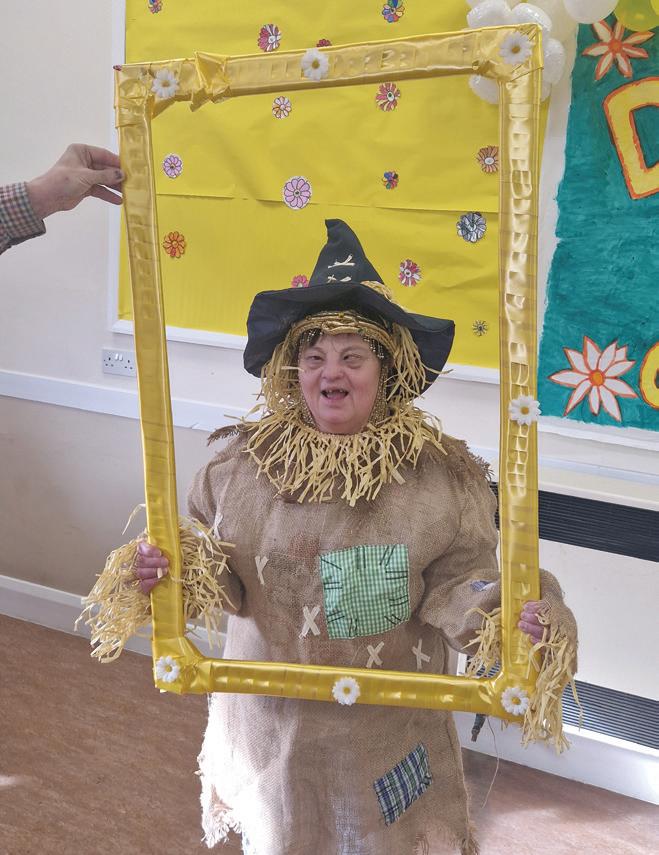
Care Quality Commission (CQC) to accommodate 20 adults with learning disabilities. Since 2018, Oaklands has proudly held an outstanding CQC rating, reflecting its commitment to excellence.
Daniel Pendered, Deputy Manager at Oaklands, told us that the ethos of the home is centred on helping residents and those in respite lead dignified, happy lives while becoming as self-reliant and independent as possible. He said, “We provide a safe and non-judgmental environment where care is delivered with compassion and respect.”
The true strength of Oaklands lies in its exceptional staff, who consistently go above and beyond to ensure the wellbeing of the residents. Daniel said, “Their unwavering dedication fosters an atmosphere of genuine care, creating a second family for our residents. This supportive community environment ensures
that residents feel valued, secure and cherished, enhancing their overall quality of life.”
Oaklands Care Home plays a vital role in the broader community, extending its positive impact beyond its immediate residents. Daniel explained how the home is an integral part of Warsop, fostering a sense of belonging, not only for our residents, but also for the local community. He told us, “We host residents from nearby homes and regularly participate in community events, including performances at the local church. Our ‘Any Voice Will Do’ choir recently received high praise for their beautiful performance, with the church rector noting the moving and appreciated spirit of togetherness it brought to the congregation.”
The grounds of Oaklands are a testament to the home’s commitment to the wellbeing of its residents. The serene surroundings and stunning gardens provide a
BUSINESS carehomemagazine.co.uk 14
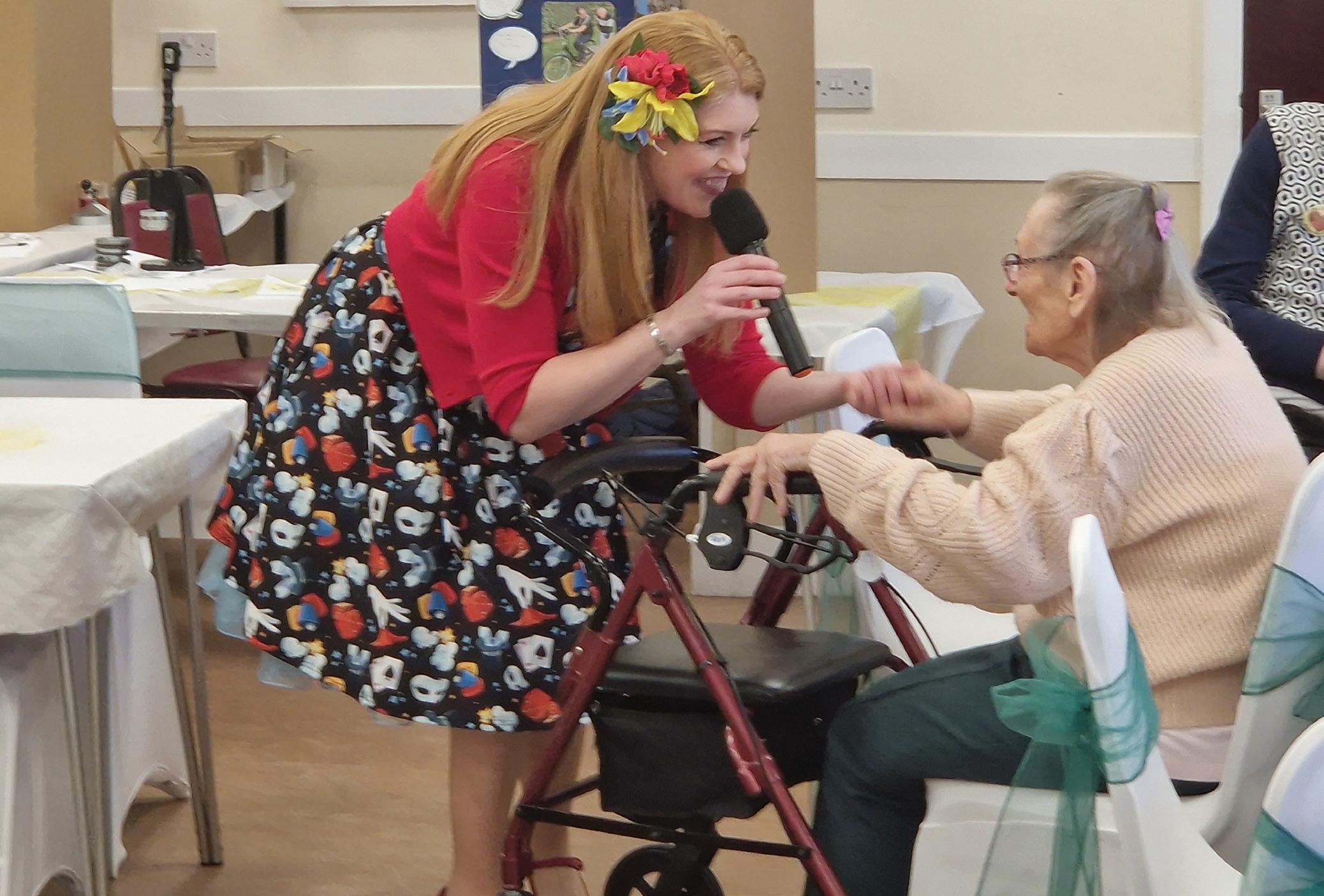
tranquil atmosphere, enhancing the quality of life for all, and the on-site memory garden offers a peaceful place for reflection and remembrance, providing comfort to residents, staff and visitors alike.
Daniel revealed how the gardens serve multiple purposes, as they offer a space to enjoy the sunshine, connect with nature, and engage
in activities such as growing and harvesting fruits and vegetables. These activities foster a sense of purpose and significantly impact residents’ mental health. Daniel explained, “The gardens are also used for mindfulness activities and guided meditation, contributing to the holistic wellbeing of residents and staff.

“Creativity thrives at Oaklands, exemplified by our delightful pantomime performances. These events showcase the talents of residents and staff, bringing joy and fostering strong bonds within our community. The performances enhance communication skills, build relationships and boost confidence, contributing to the overall enrichment of our residents’ lives.”
In March 2024, Oaklands proudly won the East Midlands Care Home of the Year award, and one of its support workers was honoured with the Carer of the Year award. These accolades are a testament to the team’s unwavering dedication to providing exceptional care and creating a nurturing, empowering environment for all who call Oaklands home.
Oaklands Care Home remains committed to delivering the highest standard of care, fostering a supportive community, and enhancing the lives of our residents through compassion, creativity, and holistic wellbeing.
oaklandscharity.co.uk
BUSINESS carehomemagazine.co.uk 15
Help Residents Blossom
Flower arranging is an enriching and therapeutic activity that can bring numerous benefits to residents of care homes. In this instalment of Activity of the Month, we delve deeper into these benefits.

This creative pursuit which is sometimes overlooked in care settings, has the potential to enhance the quality of life for elderly individuals by offering cognitive, emotional, and social benefits.
Introducing flower arranging as a regular activity in care homes can transform the environment, foster community, and promote mental and physical wellbeing.
Flower arranging is a simple yet deeply satisfying activity. It involves selecting flowers, arranging them in aesthetically pleasing compositions, and sometimes creating thematic displays. The sensory experience of handling flowers—feeling their
textures, smelling their fragrances, and observing their colours—can be incredibly stimulating and soothing for all involved.
Engaging in flower arranging can have significant cognitive benefits for care home residents. The process of choosing flowers, considering colour combinations, and arranging them in a balanced composition stimulates critical thinking and problem-solving skills.
Recalling different flower types, their names, and the techniques used in arranging them can help improve memory function, which is particularly beneficial for residents with dementia or other cognitive impairments. The detailed work
of arranging flowers requires concentration, which can help improve attention span and provide a sense of accomplishment.
The emotional impact of flower arranging is profound as the calming nature of working with flowers can reduce stress levels and alleviate anxiety. The act of arranging flowers can be meditative, promoting relaxation and a sense of peace.
Flower arranging allows residents to express their creativity and individuality. Through their unique arrangements, they can convey emotions and tell personal stories, which is particularly valuable for those who may have difficulty
ACTIVITY OF THE MONTH
carehomemagazine.co.uk 16


expressing themselves verbally.
Flower arranging is not only a solitary activity but also a wonderful opportunity for social interaction amongst groups of residents within the home. Group flower arranging sessions encourage socialisation and teamwork. Residents can share ideas, complement each other’s work, and build stronger relationships. Working together on a communal project can enhance a sense of belonging and create shared memories. These sessions can be a talking point and a source of pride for residents.
The physical aspects of flower arranging also offer several health benefits. The fine motor skills
required to handle delicate flowers, cut stems, and place them in arrangements can help maintain and improve dexterity.
While not overly strenuous, the physical movement involved in arranging flowers—reaching, bending, and standing—can contribute to maintaining physical health and mobility.
Introducing flower arranging as an activity in care homes can significantly enhance the wellbeing of residents. This simple, yet profoundly engaging activity, offers cognitive, emotional, social, and physical benefits, making it a valuable addition to the range of activities provided in care
To successfully introduce flower arranging in care homes, consider the following steps:
Gather Materials:
Provide a variety of fresh flowers, foliage, vases, and arranging tools. Ensure the flowers are safe and non-toxic.
Create a Comfortable Space:
Set up a well-lit, accessible area where residents can comfortably work on their arrangements and ensure the space is wheelchairfriendly.
Provide Guidance:
Offer guidance from staff or volunteers knowledgeable about flower arranging. Simple instructions and demonstrations can help residents feel more confident.
Encourage Participation:
Make the activity inclusive, encouraging all residents to participate regardless of their skill level. Offer support and adapt the activity as needed to meet individual needs.
Celebrate Achievements:
Display the finished arrangements around the care home to create a vibrant and welcoming environment. Consider organising small exhibitions or competitions to celebrate residents’ creativity.
settings. By fostering a sense of community, encouraging creativity, and promoting mental and physical health, flower arranging can help residents lead fuller, more enjoyable lives.
ACTIVITY OF THE MONTH carehomemagazine.co.uk 17
The Power of People
Maintaining top-tier standards is at the heart of the care sector, and that includes ensuring exemplary client services. Managing Director of The Maple Group Shaquille Pabani knows this challenge all too well. Shaquille shares his experience fighting to establish a work-life balance without losing the human touch his service users expect.

The Maple Group operates a range of services, including home care services, care homes, and medical clinics.
The Maple Group’s Journey When the Maple Group first
BUSINESS
carehomemagazine.co.uk 18 Unlike competitors, AnswerConnect offered the level of quality and professionalism The Maple Group needed.
launched, Shaquille handled much of the call intake himself.
“From the company’s inception it was myself picking up all the calls. That progressed to recruiting an individual in-house to answer the calls, which was not the most efficient practice.”
Seeking a Work-Life Balance
Even after recruiting additional staff, round-the-clock responsiveness proved draining. “Our staff preferred to sleep [rather than] pick up calls in the night, which is fair enough!” Shaquille remarked. The need for a dependable solution was clear.
Maintaining Standards 24/7
The Maple Group prides itself on delivering the highest care standards, necessitating a reliable and accessible communication channel at all times. “With the demographic we deal with it is extremely important to realise that they’re a vulnerable section of society. And having that 24-hour communication… is absolutely fantastic for them.” Shaquille emphasised.
Cost-Effective Support
However, like many care providers, The Maple Group needed something cost-effective. “From a cost analysis point of view, it didn’t make sense to hire dedicated staff to man the phones,” Shaquille noted. Something had to change.
The Search
Exploring various options, the team initially chose an overseas virtual assistant service. “We outsourced to VPAs based in India,” Shaquille explained. However, the quality was lacking, and communication issues arose. Shaquille and his team decided to look for a solution closer to home; one that could understand the nuances of the language.
The Solution
After reviewing several services, The Maple Group found AnswerConnect.

“The biggest reason we chose AnswerConnect was quality,” Shaquille explained. Unlike competitors, AnswerConnect offered the level of quality and professionalism The Maple Group needed.
The Impact
Besides the ability to respond to callers day and night, The Maple Group needed a partner committed to using real people.
Keeping Care Human
“The demographics in the care industry are interesting. Our service users are used to personal interactions. AnswerConnect provides that individual connection which is imperative for our clients,” Shaquille said. AnswerConnect provided essential 24/7 support with real people, not AI.
Taking Back Personal Time
Besides giving clients a consistent call experience, Shaquille points to the impact on his working life. “I would definitely agree that AnswerConnect helps you with
work-life balance. Previously whenever a call wasn’t answered it was routed to me. That could be evenings, weekends or in the middle of the night!”
Supporting The Maple Group
Under challenging circumstances, The Maple Group continues to excel. AnswerConnect is proud to support them in delivering professional, empathetic care across the UK. As Shaquille concludes, “The great thing about AnswerConnect is it takes the burden off.”
Ready to Transform Your Business?
Discover how AnswerConnect can help you maintain quality service while reclaiming your time. For a limited period, readers can enjoy 50% off our Growth Plan for the first three months of service. Visit us online today to learn more! answerconnect.co.uk/care

BUSINESS carehomemagazine.co.uk 19
Cost Effective Control
Allow us to introduce SFIncS r/3 - the fee income system by Intracare, specifically for residential and nursing care homes.

Designed to deliver simplicity and ease of use coupled with speed, flexibility and accuracy, SFIncS r/3 (Simple Fee Income System release 3) has a proven track record of over 12 years in use.
Originally developed and prototyped as an MS Access database, since 2017 SFIncS r/3 has lived entirely on the cloud, so is available 24/7 from anywhere in the world.
As a completely bespoke package, born of necessity and collaboration between seasoned software consultants with ties to the care industry, SFIncS r/3 offers innovations and capabilities not found in any other system.
Separation of sponsor and service user responsibilities permits unlimited sponsor/service user relationships, and as any number
of charge codes may be defined, this allows complete flexibility of service user/sponsor /charge code definition.
Its unique continuous billing function is the most efficient means possible of defining recurring charges (an entry is only required when a change occurs) and both an ad hoc charge function and a cashbox module are available for incidental expenses (either or both can be used).
Use of the balance forward accounting principle (which makes unnecessary invoice matching a thing of the past - though invoicing is included) plus super quick receipts entry using just ‘six clicks’ makes SFIncS r/3 almost effortless to use.
Paula, who owns and operates Monkstone House Residential Home in Porthcawl testifies to it’s
incredible prowess: “With 41 partly private and partly sponsored service users, some of whom are multiply funded, it takes me only 30 to 40 minutes per week to keep both my accounts and fee income up to date! More importantly, I never need to worry about underpaid or overpaid fees - everything is always spot on. And the invoices and statements produced let me present the polished and professional image I need.”
SFIncS r/3 integrates easily with any accounting package, can be used by any type of care home and by single or multiple home operators alike.
For more information email benjones@intracare.co intracare.co/
TECHNOLOGY
carehomemagazine.co.uk 20
Better
by
Design:
A Fee Income System especially for Residential and Nursing Care Homes
We’ve analysed every aspect of fee income processing to the nth degree and developed a bespoke solution that delivers simplicity and ease of use coupled with speed, flexibility and accuracy – all in one outstanding application package.
SFIncS r/3 is the ultimate fee income management and control system.
• Unlimited sponsor and charge code assignments allow complete flexibility of service user billing profiles.
• Perfect for all types of care homes - Nursing, Residential, Mixed, Specialist.
• Unique continuous billing functionality provides the most efficient charge definition possible. Only charge start points need to be maintained and all sponsor charges for each service user (including historic) are shown on just one screen.
• Completely flexible invoicing. Invoice any sponsor at any time for any charges for any service user for any period of time.
• Super fast receipt entry including ‘Six clicks’ copy functionality.
• Balance forward accounting means you can forget laborious invoice matching.
• Ad hoc charges functionality.
• Cashbox module included.
• Works for multiple or single home operators.
• Integrates with any accounting system.
• Plus all the reports, views and graphs you’ll ever need.
• In use for over 12 years.
• Free training and help with system set up.
• Historic data loading option available (charges may apply).
• 30 day free trial.
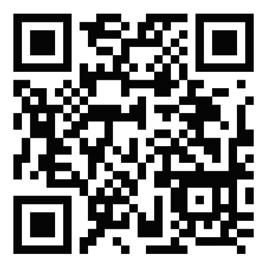
For a demo, free trial or for further information please email benjones@intracare.co or visit https://intracare.co/get-started

SCAN ME
Meat-Free Goodness
In another instalment of our much-loved Dishing Up, this month we share a recipe to tantalise the taste buds of your residents. Provided by V for Life (VfL) – here’s how you can make easy and fulfilling meat-free meatballs.
Ingredients
• 300g/10 1/2 oz firm tofu
• 1 onion, roughly chopped
• 2 garlic cloves, roughly chopped
• 2 tsp dried Italian or mixed herbs
• 60g/generous 2oz breadcrumbs (you can use premade; shop bought)
• Good pinch of salt
• Pepper to taste
• 1–2 tbsp olive oil
Steps
1. Preheat oven to 180°C/350°F/ gas mark 4.
2. Put all ingredients apart from the oil in a food processor or blender, and blitz into a paste.
3. Roll the mixture into balls, roughly 2.5cm in diameter. Place on a baking tray and drizzle each ball with some of the olive oil.
4. Bake for around 25 minutes, until they are crisp and brown on the outside.
5. Serve with your favourite pasta sauce and spaghetti.
Preparation time: 15 minutes
Cooking time: 25 minutes
Serves: 2
Implementing vegan recipes in care homes can offer several benefits, both for the residents and the overall facility. Vegan meals can be nutritionally balanced and contribute to better health outcomes for a range of ages.
With meat-free diets becoming more popular across the globe, it can be tricky to know what to opt for as a replacement to the meat. Tofu is often used as a substitute

in vegetarian and vegan dishes because of its neutral taste, making it a versatile ingredient for replacing meat.
These meatballs are super easy, crisp on the outside and
moist in the middle. The team at Vfl explained, “They are a great alternative to a traditional meatball, combining all the classic Italian flavours.”
vforlife.org.uk
FOOD AND NUTRITION
carehomemagazine.co.uk 22



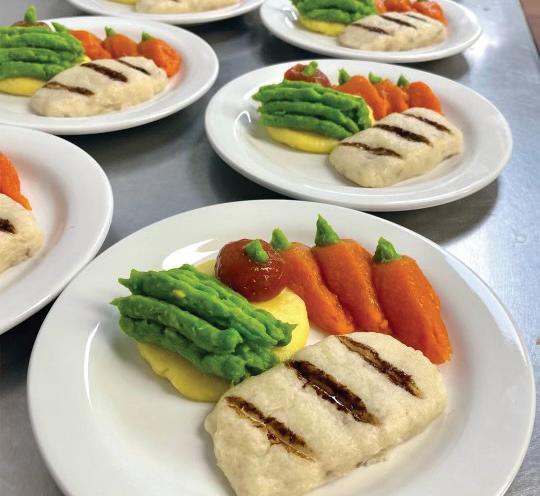
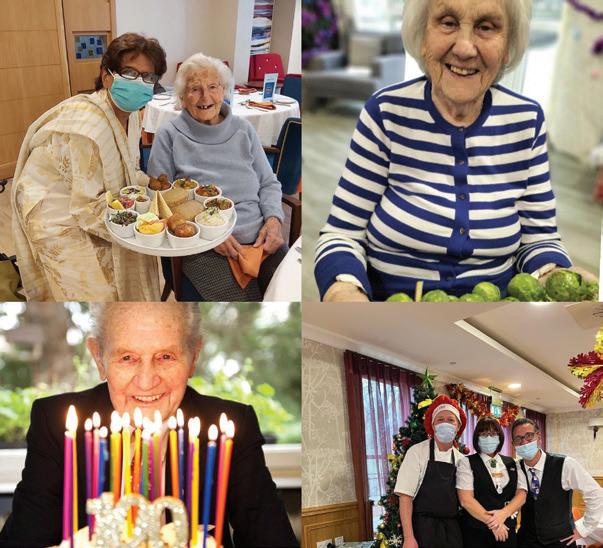
A Unique Service For You…
Our passionate team of talented chefs develop nutritionally balanced menus that are designed to offer traditional, home cooked favourite dishes that evoke memories of yesteryear, create fun and serve with a contemporary twist. Our menus celebrate the best in fresh, seasonal UK sourced produce, that offer a variety of choices for our diners and cater for every dietary need.
Dining with Dignity…
Signature Dining actively promote a ‘Dining with Dignity’ ethos, for those residents living with Dementia and Dysphagia and train all of our chefs in producing meals using the IDDSI framework. We understand the complex requirements that some of our diners may have, and we are dedicated to ensuring that residents aways feel socially supported and included at meal times. We make meal times fun and interactive served with a twist of happiness…
Setting the Signature Standard...
As the only independent Award winning care caterer, Signature Dining have an excellent reputation for delivering exceptional person centred service. With residents and patients at the heart of what we do, we work in partnership with our clients to develop a food offer that is entirely unique to your setting and that offers the very best value.
Talk to us today & discuss how we can take the hassle out of your catering.
To arrange a no obligation tasting for you and your residents or simply want to chat about bespoke discounted financial packages contact us below


Creating a fantastic dining experience, delivered by our multi award wining teams E :sarah.h@signature-dining.com T: 07738 981860 E: paul.r@signature-dining.com T: 07714 710707 www.signature-dining.com @signaturedining_official Signature Dining @signaturediningofficial
A Hot Topic
New University of Bristol research project launched to find out about labour supply and demand in older adult care.
The PRIME Project offers employers in older adult care the opportunity to contribute to policy debates on labour needs, challenges, and opportunities in the sector.
The PRIME Project is an international research and policy project that analyses how national institutions shape the conditions of migrant labour across Europe. The research team is based at eight different institutions and is conducting research in five countries.
The institutions involved are University of Bristol, the European University Institute (in Italy), the University of Uppsala (in Sweden), the University of Warsaw (in Poland), University of St Gallen (in Switzerland), the University of Zagreb (in Croatia) and the Mixed Migration Centre (Danish Refugee Council). The project is conducting research with employers and labour providers in: Austria, Italy, Poland, Sweden, and the UK. The project is funded by the EU’s Horizon scheme.
The team are investigating how sector specific institutions shape employers’ demand and use of migrant labour. The team want to know how institutions like welfare, housing, and immigration shape the supply of different types of labour in the sector; how employers resolve labour/skills shortages; and whether there is a path dependence in the use of (irregular) migrant labour in particular jobs and sectors.
The older adult care sector has faced new challenges in the aftermath of Covid-19, and changing immigration rules such as the introduction of Health and

Care Worker Visa and more recent ineligibility for dependents to be accompanied by Care Workers.
The PRIME team want to work with employers and labour providers in the sector to explore how they recruit labour; challenges in accessing and retaining workers; and opportunities to influence national policy. The PRIME team will develop a policy hub that academic colleagues and employers can draw on for insights on labour conditions across the UK and the EU.
The PRIME team need employers to get involved with the project and need employers’ support. The team would like to invite you to contribute to the project by
completing a short, 10-minute survey about how you meet your labour needs. You will be asked about your business, whether you use migrant workers, labour and skills shortages, and how we can improve national policy.
The survey will be open until the end of June 2024.
The project team encourages as many colleagues in the sector to complete the survey.
If you would like to find out more, please contact: Dr Eda Yazici eda.yazici@bristol.ac.uk


BUSINESS
carehomemagazine.co.uk 24

Caring for your communications
Is your care home ready for the biggest change to communications in a generation?
In 2025, the way we connect to the internet and use voice services will change forever. Traditional analogue and broadband lines will be retired and replaced with reliable, hosted voice powered by full-fibre connectivity. If you’ve not yet made the switch, now is the time to do so.
Switch on to full-fibre and feel the benefits today.
T: 01223 661636
E: enquiries@cambridgetelecom.com
W: cambridgetelecom.com/care-homes
Cost savings and scalability Enhanced resilience Agile communications Enhanced care Improved engagement
BENEFITS TO YOUR CARE HOME
Essential 5
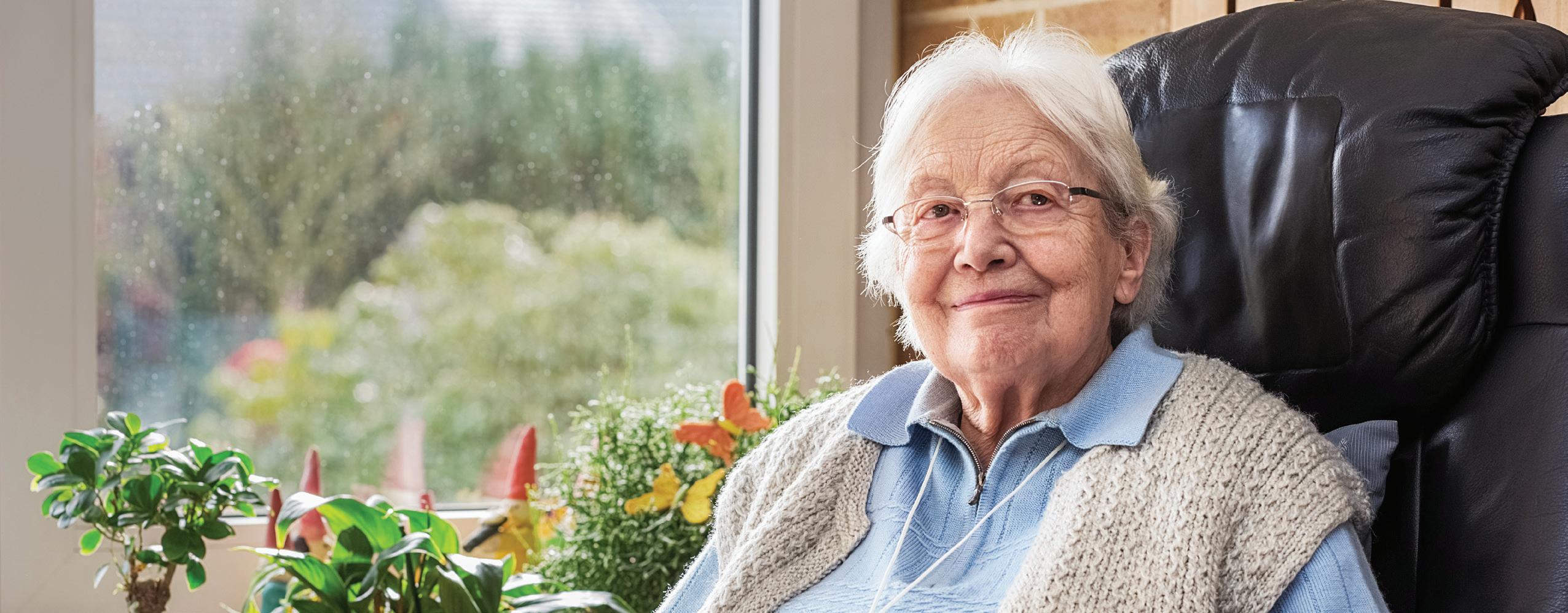
Administering and monitoring medications in care home settings is a critical responsibility that ensures the safety and wellbeing of residents. Here, we outline five best practices to follow.
1
Implement a Robust Medication Management System
Utilising electronic systems for medication administration records ensures accurate and up-to-date information, minimising errors by providing real-time access to crucial medication data for all healthcare staff involved in patient care. Establishing a routine where two staff members verify the medication before administration significantly reduces errors, ensuring the correct medication is given to the right patient at the right time.
2
Comprehensive Training for Staff
Continuous education is essential for all staff involved in medication administration. Regular and comprehensive training programs should cover critical topics such as dosage calculations, recognizing side effects, and emergency procedures to ensure preparedness in all scenarios. In line with this, periodic assessments of staff competency in administering medications help maintain high standards of care. These evaluations ensure that staff members are proficient and up-to-date with best practices in medication administration.
4 3
Resident-Centred Approach
Developing individualised medication plans is essential for addressing the specific health needs, preferences and medical histories of each resident. Personalised plans help in tailoring treatments that are most effective for each individual. Work to schedule reviews of each resident’s medication regimen to assess the effectiveness of the treatment, monitor side effects and check for possible drug interactions. Regular reviews ensure that the medication plan remains optimal over time. Engaging residents and their families in this medication management process promotes transparency and adherence to treatment plans. Involving them in decision-making helps ensure that the care provided aligns with their preferences and needs.
Effective Communication Channels
Maintaining detailed documentation of all administered medications, including the time, dose and any observations, is critical for effective medication management. Clear records enable tracking of the medication process and provide valuable information for ongoing care. Strong communication between healthcare providers, such as doctors, nurses and pharmacists, is essential for a coordinated approach, ensuring that all aspects of a resident’s medication plan are considered and optimised.
5
Regular Monitoring and Auditing
Conducting regular audits of medication administration records ensures compliance with established protocols and identifies areas needing improvement; these are an essential tool for maintaining high standards in medication management. Monitoring residents for side effects and adverse reactions to medications is crucial. Regular health monitoring allows for timely adjustments to medication regimens in consultation with healthcare providers, ensuring resident safety and wellbeing.
HEALTH AND SAFETY
carehomemagazine.co.uk 26
HEAT TREATMENT SYSTEM
Pest Control
Heat Treatment
✓ Heat Treatment Pioneers
✓ Bed Bug Specialists
✓ Residential and Commercial

✓ Food Production Pests
✓ Sub Contracting Services Offered
www.thermokilservices.co.uk I N S E C T C O N T R O L U SI N G T H E TAI L O R E D F O R PEST CONTROL PARTNERS
Smart Solutions
With help from experts, we look into the innovative technologies that can enhance health and safety in care home settings.
In recent years, the care home sector has faced numerous challenges in maintaining a safe and healthy environment for residents. From staffing shortages to financial constraints, care providers are constantly seeking innovative solutions to ensure the well-being of those in their care. One such solution that has gained traction in recent years is the implementation of advanced monitoring technologies.
The team at Care Campaign for the Vulnerable believe that these technologies have the potential to address many of the unique challenges faced by care home facilities.
Jayne Connery, Founder, CCFTV, recognises that one of the primary challenges facing care home facilities is the need to ensure the safety and security of residents, particularly those who are vulnerable or have complex care needs. Traditional methods of monitoring, such as periodic checks by staff, can be labourintensive and may not provide a comprehensive picture of residents’ well-being. However, by utilising advanced monitoring technologies, such as CCTV cameras and sensor systems, care providers can create a safer and more secure environment for residents.
“These technologies allow care providers to monitor residents in real-time, enabling them to detect, and respond to, any issues or concerns promptly. For example, CCTV cameras can help identify instances of abuse or neglect, while sensor systems can alert staff to potential safety hazards, such as falls or wandering,” added Jayne. By providing this additional layer of monitoring and support, these

HEALTH AND SAFETY
carehomemagazine.co.uk 28
technologies can help prevent accidents and incidents from occurring, thus enhancing the overall safety and well-being of residents.
Another unique challenge faced by care home facilities is the need to maintain high standards of care while operating within limited resources. With staffing shortages and increasing demands on care providers, finding ways to optimise efficiency and effectiveness is essential. Jayne explained, “Advanced monitoring technologies can help address this challenge by enabling care providers to do more with less.
“For example, by automating certain monitoring tasks, such as regular checks on residents’ well-being, these technologies can free up staff time to focus on other aspects of care. Additionally, by providing real-time data and insights, these technologies can help care providers identify areas for improvement and implement targeted interventions to enhance the quality of care provided.”
At Care Campaign for the Vulnerable, the team are passionate about promoting the use of advanced monitoring technologies in care home facilities. We believe that this technology has the potential to revolutionise the way care is delivered, enhancing safety, security and wellbeing for residents, while also supporting carers in their important work.
As the demand for high-quality care continues to grow, Jayne sees it as essential that care providers have access to the tools and resources they need to meet the evolving needs of residents. By embracing technology and harnessing the power of advanced monitoring systems, care home facilities can create safer, more secure and more compassionate environments for residents, ensuring that they receive the care and support they deserve.
More recently, technological advancements have played a significant role in improving the health and safety of residents in care homes. From advanced

monitoring systems to innovative health tracking devices, these technologies are revolutionising the way care is delivered and are helping to create safer and more secure environments for residents.
Here, we outline just some of the latest technological advancements specifically tailored for improving the health and safety of residents in care homes:
Independent Safety Monitoring Systems: one of the most significant technological advancements in recent years has been the development of advanced independent safety monitoring systems for care homes. CCFTV advocate Care Protect, as their systems utilise a combination of over and discreet cameras to monitor residents in real-time, and detect any issues or concerns promptly by a team of healthcare professionals; for example, safety monitoring cameras can help identify instances of abuse or neglect and can alert staff to potential safety hazards such as falls or wandering.
Health Tracking Devices: another innovative technology that is transforming care homes is the
use of health tracking devices. These devices, which can include wearable fitness trackers, smart scales and blood pressure monitors, allow care providers to monitor residents’ health and well-being more closely. By tracking key health metrics such as heart rate, activity level and weight, care providers can identify any changes or trends that may indicate a decline in health, and intervene accordingly.
Telehealth and Telemedicine: telehealth and telemedicine technologies are also becoming increasingly popular in care homes. These technologies enable residents to consult with healthcare professionals remotely, reducing the need for in-person appointments and improving access to care. From virtual doctor’s visits to remote monitoring of chronic conditions, telehealth and telemedicine technologies are helping to improve the quality of care provided in care homes, while also reducing costs and improving efficiency.
Medication Management Systems: Medication management is a critical aspect of care in care homes, and technological advancements in this area are
HEALTH AND SAFETY carehomemagazine.co.uk 29
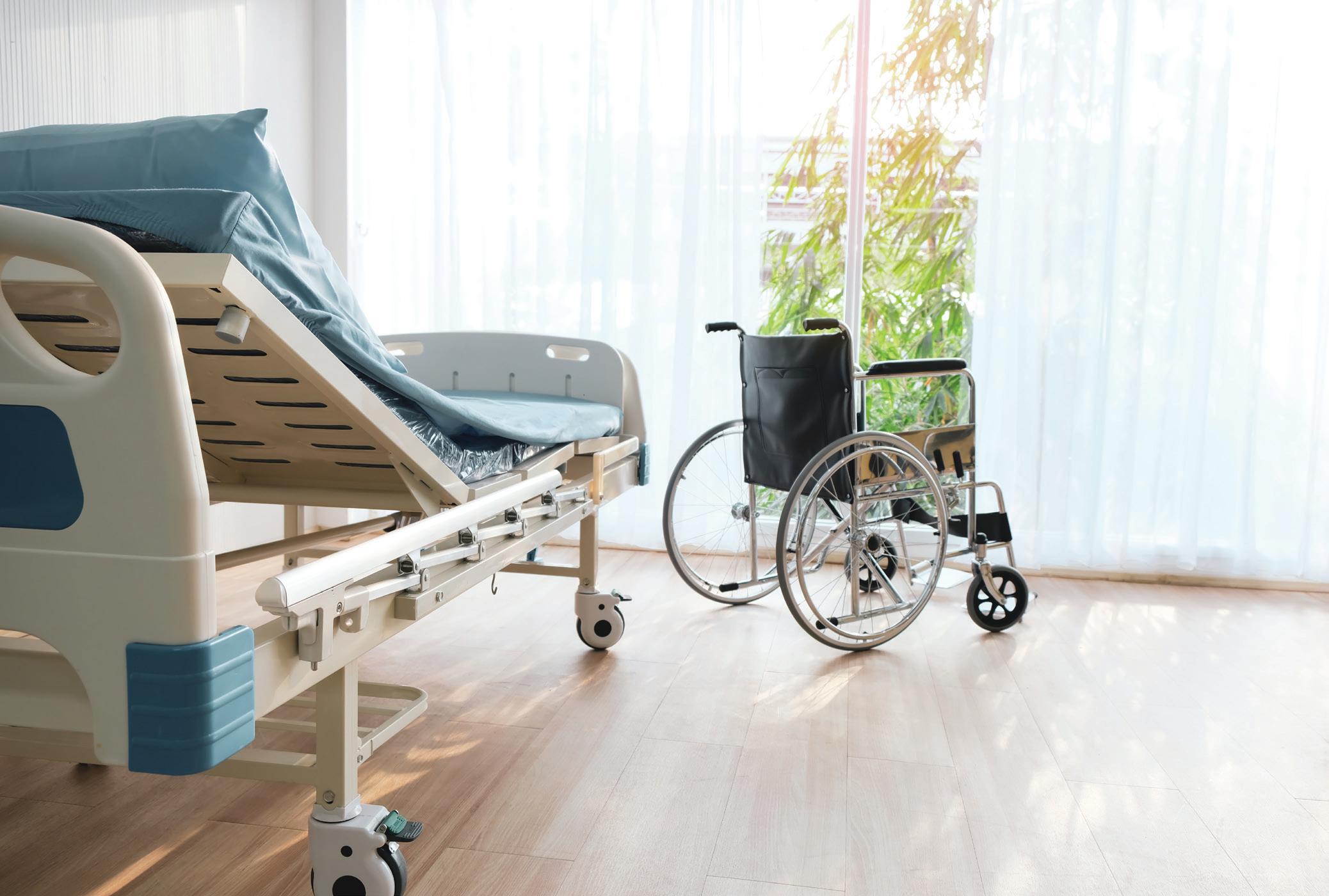
helping to improve safety and efficiency. Automated medication dispensing systems, for example, can help ensure that residents receive the right medications at the right times, reducing the risk of medication errors and adverse drug reactions.
While technological advancements have the potential to greatly improve the safety and wellbeing of residents in care homes, many smaller facilities may be concerned about the cost of implementing these innovations. However, there are a variety of costeffective solutions available that can help smaller care home facilities adopt innovative technologies without breaking the bank. Jayne outlined some examples:
“Cloud-Based Monitoring Systems offer a cost-effective alternative to traditional onpremises monitoring systems. These systems utilise wireless cameras and sensors that are connected to the cloud, allowing care providers to monitor residents in real-time from anywhere with an internet connection.
“Mobile health apps are another cost-effective solution that can help smaller care home facilities improve the health and well-being of residents. These apps, which can be downloaded onto smartphones or tablets, allow residents to track their health metrics, communicate with healthcare professionals and access educational resources.
“Smart home devices, such as smart thermostats, lighting systems and door locks, can also help smaller care home facilities improve safety and security without breaking the bank. These devices are often relatively inexpensive and can be easily installed and configured by care home staff.”
With the health of residents of utmost importance, all areas must be considered. This includes, the potential threat of bed bugs. Thermokil is a UK-based company specialising in environmentally friendly pest control solutions. They use heat treatment technology to eradicate pests without the need for chemicals.
The team at Thermokil Insect Control Services Ltd revealed
some of their latest technological advancements specifically tailored for improving the health and safety of residents in care homes, and said, “Heat treatment is the only solution that kills all life stages of the bed bug, including eggs, nymphs and adults.
“We also use highly trained sniffer dogs to detect the early signs of a bed bug infestation and provide a tool to monitor on a regular basis.
“Finally, we offer lateral flow tests which are available for the public to use and test for the presence of bed bug proteins.”
The heat treatment used by Thermokil kills all life stages of bed bugs in one visit, eliminating the need for multiple spray visits and the need for human bait.
The Thermokil team explained that bed bugs require a human blood meal to survive and move onto the next life stage. Once in a care home, bed bugs can hitchhike on new hosts and, in no time, cross contaminate a full scheme.
Chris Donnelly, CEO at Found CRM and Co-Founder at Lottie, also recognised that technology in care
HEALTH AND SAFETY carehomemagazine.co.uk 30

homes has advanced massively in the last couple of years. From digitising records to enabling online consultations with medical professionals, newly developed CRM systems to track care seeker journeys, and monitoring systems such as fall alarms, innovative technology has helped to support the efficiency and effectiveness of care provided by care home staff.
“Innovative technology adopted by care homes in recent years has supported carers and care home staff in providing a higher quality of personalised care by reducing the more manual and time-consuming admin-based tasks often associated with working in a care home.
“For example, online care plans help to keep track of all information a care home stores for a resident, including medical records, medicines, likes and dislikes, hobbies and interests. Having this information to hand 24/7 and easy to update makes it easier for all carers to provide a higher level of personalised care. What’s more, family members and friends
can easily keep up to date with the activities their loved one has participated in and their day-to-day life in a care home,” Chris said.
Offering examples of smart sensors or monitoring systems used in care homes to detect falls or emergencies, Chris explained, “Personal alarms are wearable devices (often a pendant or wristband) that residents can wear around the home when moving independently. These devices track movements and trigger an alert in the case of an emergency, such as a fall. Once triggered, caregivers can react quickly to provide immediate care.”
There are now a whole range of personal alarms and monitoring systems available, and each care home will have its own preference. Modern systems can offer 24/7 monitoring and record helpful health data, such as heart rate, fall detection and sleep cycles.
We asked Chris how these technologies contribute to improving the overall quality of care and resident satisfaction in care homes. He replied, “Innovative
technologies improve the overall quality of care and resident satisfaction in a care home. For example, wearable or monitoring devices like fall alarms and pendants help ensure resident health and safety at all times, while allowing residents to live as independently as possible. Carers are immediately made aware of any emergencies or incidents and can act quickly to provide the best level of support.
“Technologies that reduce admin-based tasks, such as care home management tools to track enquiries, document care plans, medical notes, or support with invoicing and finance, give valuable time back to care home staff, allowing them to spend more time providing personalised and individual care for all residents.”
Ultimately, the adoption of assistive technology in care homes means that residents and employees will feel the benefits, with less time spent on administrative tasks and more on compassionate care.
HEALTH AND SAFETY carehomemagazine.co.uk 31
Staying Compliant
Fire safety legislation can be somewhat of a minefield. At UK Fire Training they have been providing fire consultancy support as well as their tailored fire training to individual care homes and care home groups throughout the UK to assist them to stay compliant. Here, the team give a snapshot into fire safety requirements.
Fire Risk Assessment
A Fire Risk Assessment (FRA) should be conducted by a competent person. Ultimately, the FRA will review the fire risks and what measures you need to take to keep both people and property safe. The FRA will form the foundation of your fire safety plans.
Training
The law states that all employees should receive ‘suitable and sufficient fire training’. An off-theshelf Fire Marshal may not go in to the specifics of care homes and their evacuations procedures and therefor there is questions marks whether this would be deemed ‘suitable and sufficient’. Our Fire Marshal & Evacuation in Care Homes course satisfies the requirements.
Fire Doors & Compartmentation
Fire doors and compartmentation play an essential role in slowing the spread of fire and smoke buying staff valuable time to evacuate residents whilst allowing the fire service time to respond. They also allow for progressive evacuations rather than full evacuations, meaning staff can concentrate on evacuating the closest areas first. Care homes should have a register of their fire doors and a Fire Door Inspection should be completed by a competent person and weekly checks undertaken and recorded. Care homes should have a Compartmentation Survey completed where the inspector will look at conditions of walls and floors including hard to access areas such as roof voids.
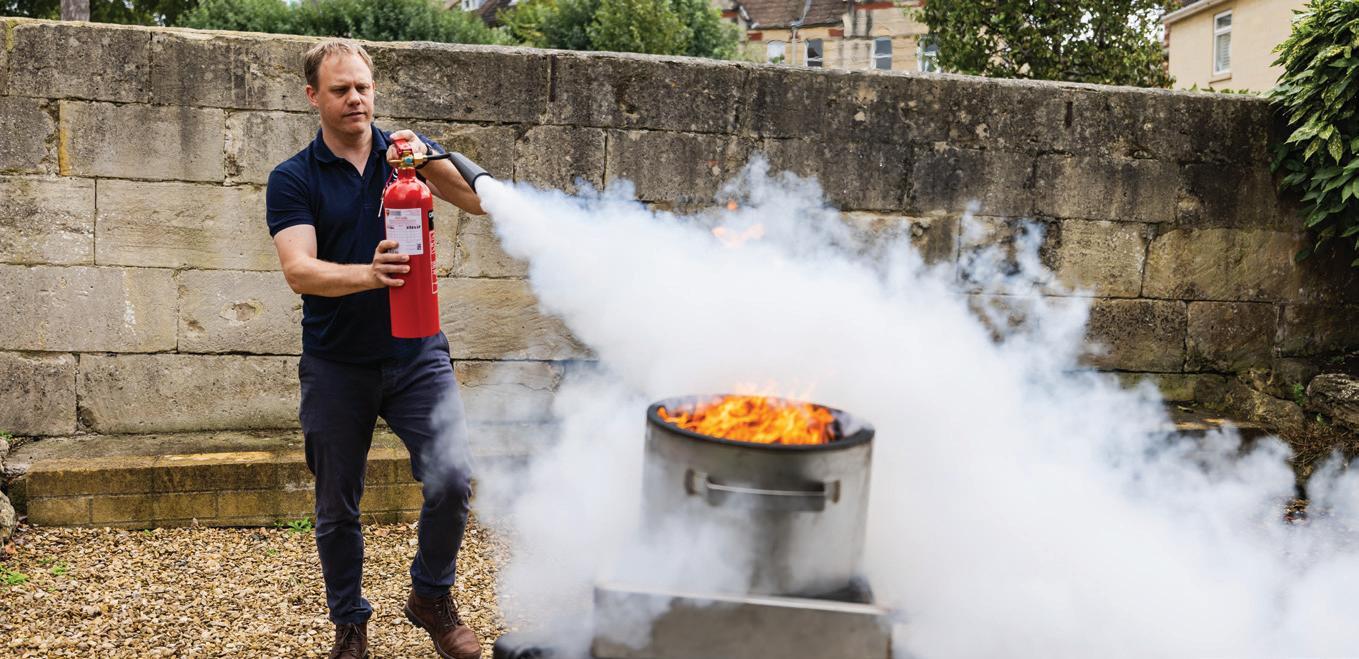
Fire Extinguishers
Locations and types of fire extinguishers should have been identified in your FRA or by your supplier. These should be inspected annually by your service provider and checked weekly to ensure they haven’t become damaged in anyway and everything is as it should be. Staff should also be trained on their correct use. Our training includes a hands on practical session as well as what to look for when conducting weekly checks.
Fire Alarm
Care homes should have an L1 fire alarm system installed. An L1 alarm system offers the most protection from an alarm system and automatic detection such as smoke or heat detector are located in every room. Alarm should be serviced bi-annually and checked weekly.
Progressive Evacuations
Unlike most workplaces care homes tend to adopt progressive evacuations rather than simultaneous everyone out. This is essentially where staff and
residents are moved gradually through fire doors area by area allowing staff to help residents needing assistance. Evacuation training should occur twice a year and staff should be trained on evacuation equipment. Our training includes a progressive evacuation and equipment training.
If you have any questions or would like to learn more about how are services could benefit your home please visit ukfiretraining.com or come and see us at the Care Managers Show on Stand C11.
ukfiretraining.com

HEALTH AND SAFETY
carehomemagazine.co.uk 32
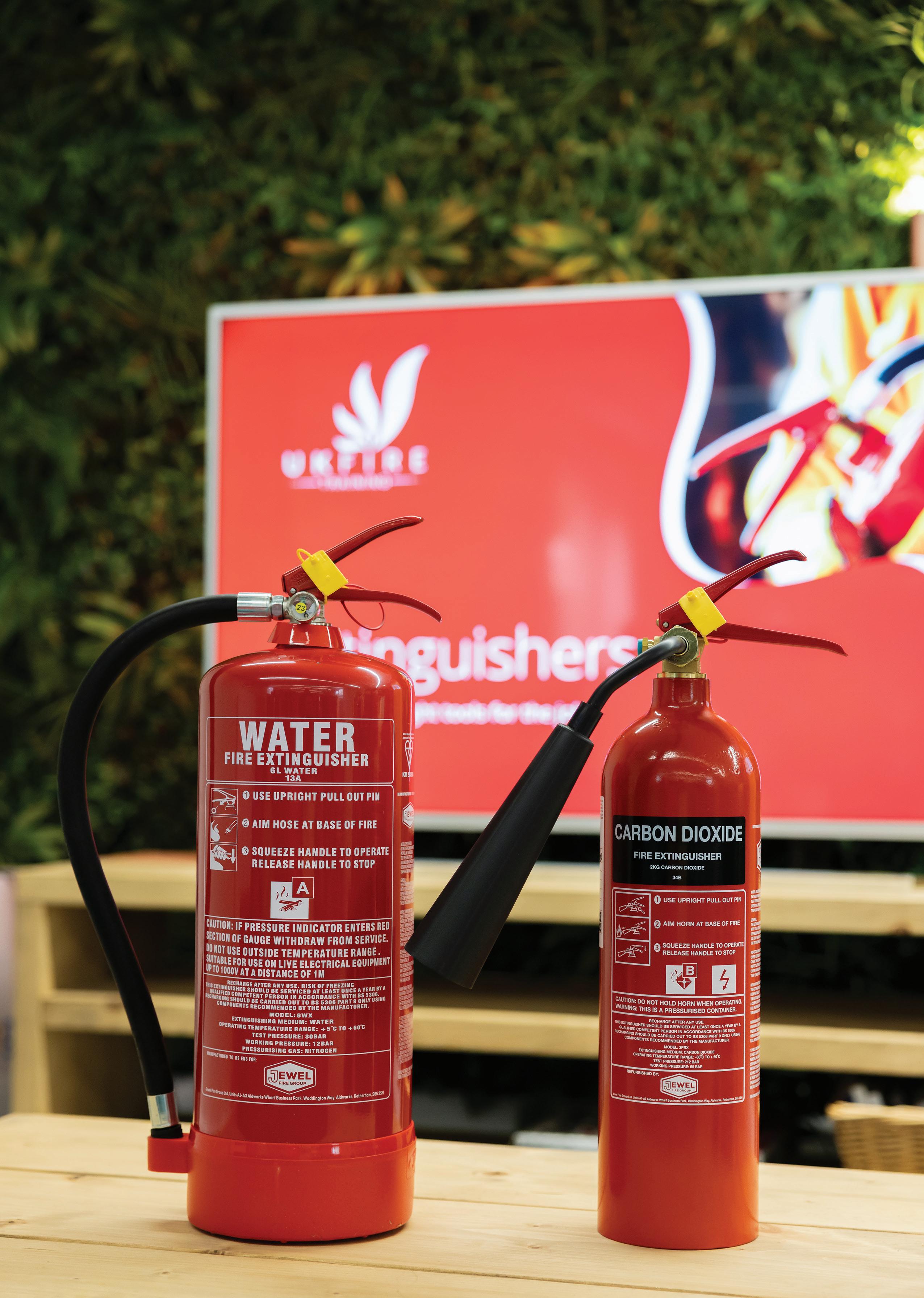

UK’s Number 1 fire training provider. Care home fire training delivered by knowledgeable firefighters. 0800 216764 www.ukfiretraining.com info@ukfiretraining.com Come and see us on Stand C11 at the Care Managers Show at the NEC 27th & 28th June
Medical Thermography
Transform reactive care into proactive care with a revolutionary approach to reducing Pressure Injuries, DFUs, and Pain.
Diabetes UK1 reports that every 25 minutes, one person in residential care is admitted to hospital as a result of their diabetes. This leads one to look at some of the statistics of people living in residential care: -
• 80% have dementia or significant memory problems2
• 27% have diabetes3
• 60% of those with diabetes also have peripheral arterial disease (PAD)4
• 11.6% prevalence of Pressure Injuries (PIs) in care homes5
The combination of Diabetes and PAD automatically puts residents into the high-risk category for Diabetic Foot Ulcers (DFUs), while dementia adds a greater burden on caregivers for early prevention of DFUs and PIs
Meantime, the NAPCHD6 recommends daily foot screening for high-risk diabetics, while the IWGDF7 go further, and state highrisk feet should be checked daily for temperature anomalies.
The use of Thermography for daily feet checks, provides instant, highly intuitive, and quantitative data on areas of stress, pre-clinical infections, and vascular disease, all of which are invisible to the naked eye.
It transforms reactive care into a proactive, systematic approach to preventative care, effectively managing and minimising the impact of diabetes, reducing ulcerations and hospitalisations, and eases the burden on caregivers.
A Thermidas thermal tablet makes daily foot screening a much simpler, more efficient, and effective process, and becomes a timesaving tool.
In addition to DFUs, Thermidas

thermal tablets can be used for the screening and management of multiple morbidities including Pressure Injuries, pain, arthritis, pre-clinical infections, PAD, Charcot Foot, Osteomyelitis, DVTs, and thermal comfort, making it an incredibly versatile and costeffective tool.
Thermography will help care homes operators meet The Enhanced Health in Care Homes Framework8, a key expectation of which is to minimise unplanned hospital admissions by proactive, personalised care.
Moreover, with regards to pain and PIs, multiple studies9 have shown that medical thermography can objectively and accurately identify pain and PIs in the form of thermal anomalies long before any visual symptoms, allowing carers to immediately implement procedures to reduce pain or mitigate pressure injuries. In one study10 thermography predicted 100% of PIs that developed, including anatomical location.
These studies recommend the application of thermography into routine pressure injury risk assessment to provide highly efficient, timely and reliable alerts for care practitioners.
They emphasise that thermography provides quantitative data to objectively monitor
the temperature and area of pressure injuries, and that it’s use as an adjunctive method for the evaluation of the healing process, removes any subjectivity in the assessment and monitoring of PI risk.
These studies also testify that the learning curve for thermal imaging is fairly short, and after initial support and training, a thermal system will rapidly become a timesaving and cost-efficient tool delivering enhanced residential care.
Finally, it is well documented that early signs of pressure injuries or DFUs are less easily identified in residents with darkly pigmented skin, but it should be noted, that the clinical utility of thermography is entirely unaffected by skin colour11
For more information and a free demo please contact Stephen Taylor at https://thermidas.fi/
1. Diabetes UK, Diabetes in care homes - Awareness, screening, training, 2010
2. Alzheimer’s Society, 2013
3. Care Quality Commission (CQC), 2015
4. Australian Diabetes Society (ADS), 2008
5. Sugathapala et al, 2023
6. National Advisory Panel on Care Home Diabetes (NAPCHD) Strategic Document of Diabetes Care 2022
7. International Working Group on the Diabetic Foot (IWGDF), Prevention Guideline 2023
8. Enhanced Health in Care Homes: A guide for care homes (NHS, 2023)
9. Koerner 2019, Cai 2021, Lin 2021 etc
10. Judy et all 2011
11. Charlton et al, 2020
TECHNOLOGY
carehomemagazine.co.uk 34
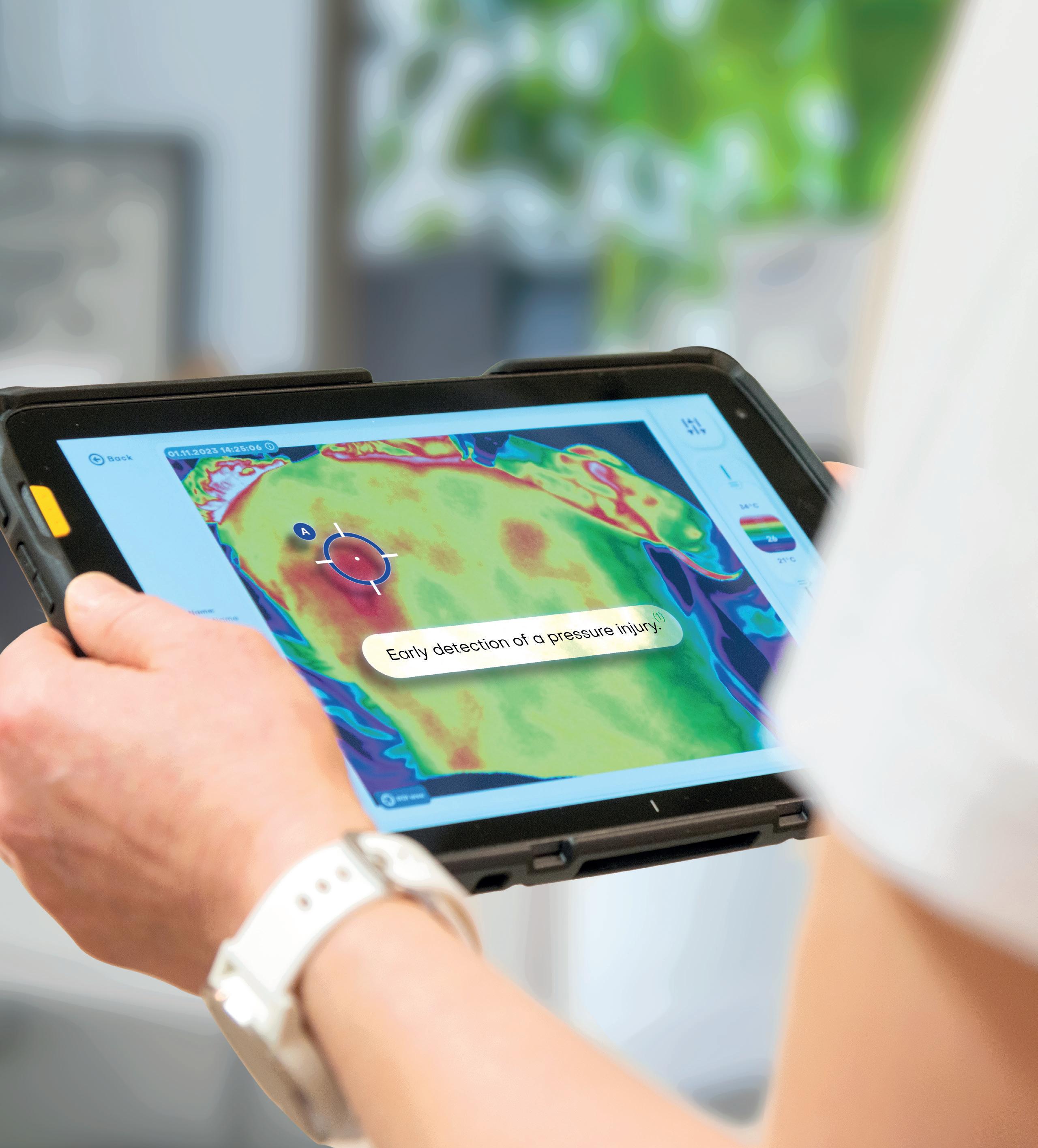

Thermography is a non-invasive method that captures thermal images of the body. By analysing these images, trained users can detect subtle temperature variations, which may indicate underlying health conditions not yet visible to the naked eye. PERSONALISED CARE WITH
Learn more at thermidas.fi MM00028A (1) Jiang et al., 2022. Application of an infrared thermography‐based model to detect pressure injuries: a prospective cohort study, British Journal of Dermatology.
THERMAL IMAGING
Personalising Care
In a piece from Verncare, we delve into how patient hygiene wipes offer an individualised approach to cleansing for those receiving care.
Providing choices for care receivers in how they are cleansed supports independence and wellbeing. NICE advise adoption of an individualised approach to healthcare that is tailored to the patient’s needs and circumstances.1
The Conti® range have been developed with personalised care in mind, we believe that those receiving assistance in bathing should be able to participate in decision making around their personal hygiene, by being given a range of cleansing options to best suit their individual needs. Conti® offers a complete range of cleansing solutions for those receiving bedbound care.
Why are water free options so important for patients?
In recent years, research has indicated that water systems can act as a source of waterborn bacterial infections. Tap water meets stringent safety standards, but it is not sterile; as such bacteria

and other microbes may be present when the water leaves the tap. For typical household uses these microbes rarely pose a serious health risk, however, in healthcare settings, patients might be more vulnerable to infection.
Conti® wet wipes provide a selection of rinse free products featuring washcloths and shampoo caps for bed bathing, hands and face cleansing wipes and plastic free wipes for post toileting. The
Using the Conti® wet and dry wipes can provide the following benefits to care facilities;
Eliminate crosscontamination
Products have been developed with single-use in mind. Intended to be used individually, with one single-use cloth per anatomical region.
Save time and cost
Research suggests that a
waterless bathing system provides a more efficient bathing process, delivering cost and time savings.2
Remove the risk of reusable
Disposable systems offer an alternative that overcome infection prevention and control limitations posed by reusable alternatives.3
use of these products replaces the need for soap and water practices by providing a pre-dosed cleansing solution which promotes good practice in personal hygiene and infection prevention.
Offering choice
Whilst water free options are critical in certain environments, we believe in patient choice and dry wipes offer an alternative, more traditional solution as they can be used with the residents own soap and bathing products. We recommend using with a single-use wash bowl to minimise the risk of infection.
Conti® multipurpose dry wipes combine strength, softness, and absorbency to deliver best practice in hygiene through everyday personal care. The range has flushable and maceratable plastic free wipes, alongside other super soft, kind to skin alternatives used with water.
vernacare.com
1. NICE (2021) 2. Owen J (2015), Delivering time and cost savings through evaluation of bed bathing practices, IPS poster presentation 3. Hallam C et al (2020) HYGIENE
carehomemagazine.co.uk 36

Celebrating Care
The inaugural launch of Care Show London brought a bustling, vibrant atmosphere to the ExCeL London on 24-25 April 2024, and welcomed 3,395 delegates, 195 speakers, and 180 exhibitors through its doors.
The event was rebranded as Care Show London following the final run of The Residential and Home Care Show in April 2023. The launch promised to bring all the passion and buzz of Care Show Birmingham to the country’s capital, and with visitors eager for the initial conference sessions, and exhibitors prepped and ready, Care Show London began.
The exhibitors showcased a wide array of products and solutions, ranging from innovative technology and care equipment to HR systems, catering, and even therapy animals. Key exhibitors included MOA Benchmarking, Nourish, Sona, Wagada Digital, Christie Finance, 2 Pure Products, Pass, E&R Moffat Catering Equipment, and Birdie.
Jake Rose, Healthcare Outcomes Manager at ARJO said: “The Care Show been really good for us. There has been a good range of different customers - from carers who are on the front line dealing with our products, also at a director level of the care homes that we’re interested in and the whole top level of detail.”
The conference programme boasted a broad variety of topic areas following this year’s key themes of funding, future workforce, innovation and change management, and sustainability. By bringing together the key thought leaders and experts from across the adult social care sector, delegates received up-to-date research, advice, and best practice from each session. From expert individuals presenting on workforce strategy, diversity, and inclusion, to esteemed panel members discussing international recruitment


CARE SHOW LONDON
carehomemagazine.co.uk 38
and the new CQC framework, the conference theatres had it all. Providing both practical guidance and thought-provoking debates, Care Show London was the place to learn from the best.
Jade Kent, Senior Associate at Stephens Scown LLP, and a speaker at Care Show London said: “The people within the room are interesting and influential, and the talks cover key topics with high calibre speakers.”
Tailored to the needs of the attendees, the show proudly presented a new set of feature areas: Caring Conversations, led by Five on a Bike, sparked discussion and insight into some difficult topics and the Technology Concierge service, offered by Guided Innovation, provided assistance and information to direct individuals to the most suitable software suppliers. The Selfie & Media Zone provided the perfect opportunity for a cheeky team photoshoot with branded signage and a life-size magazine cover to step inside! Other feature areas included Meet the Inspector Hub with CQC, the Quiet Room for relaxation, and of course the Café and seating area.
Show Manager, Matthew Moore, said: “I could not have expected the launch of Care Show London to go any better, the feedback we received from exhibitors, attendees, speakers and partners was amazing. Bringing the Care Show buzz to London is something we have only dreamed of before, and seeing it all come together was a dream come true.”
Show organisers, CloserStill Media have announced the show will return in 2025, on 30 April to 1 May, at ExCeL London. Attendees can register their interest today at https:// www.careshowlondon.co.uk/ register-interest-attending-careshow-2025
If you can’t wait that long to relive the Care Show experience, join us for Care Show Birmingham, 9-10 October 2024, at NEC Birmingham. Registration opens 15 May 2024.



CARE SHOW LONDON carehomemagazine.co.uk 39
Securing Satisfaction
After attending this year’s Care Show in London, the team at CareTutor share details on their experience at the exhibition and why it is such an important date in the calendar.
The CareTutor team had an unforgettable experience at the Care Show, the “Biggest Celebration of Care in the Capital”, which took place on the 24th and 25th of April, at the ExCel, London. The Care Show is a two-day conference and exhibition including the most invaluable learning, networking, and exciting opportunities for those working in the social care sector. We signed up to take part in the show to make use of every opportunity and gain insights into the current trends in the care sector. Our primary objective was to raise awareness about our eLearning portal, confident in its ability to revolutionise the learning journey for care professionals.
The Care Show hosted exhibitors coming from various backgrounds, showcasing their unique offerings. The show involved many inspiring talks. Among the highlights was Christine McGuinness’s speech on her experiences with autism, which left a lasting impression. Conversing with the care professionals provided invaluable insights into the challenges and rewards of their profession.
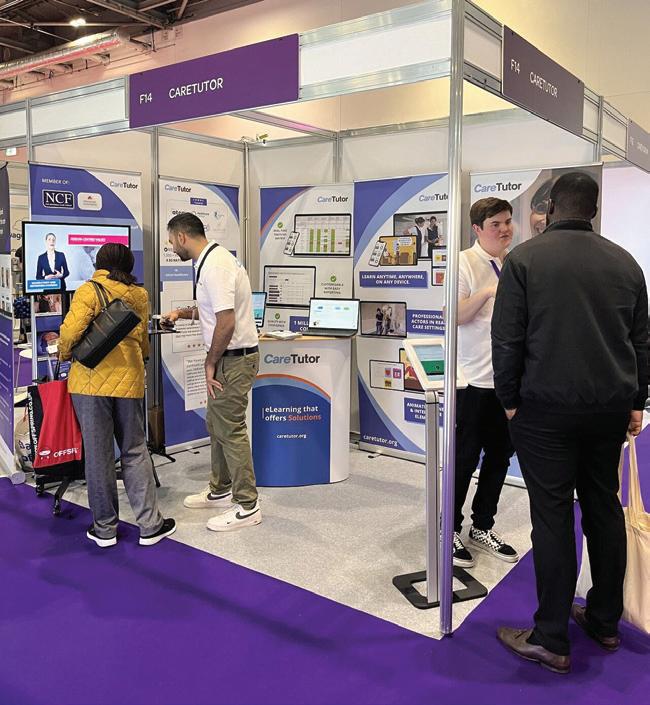
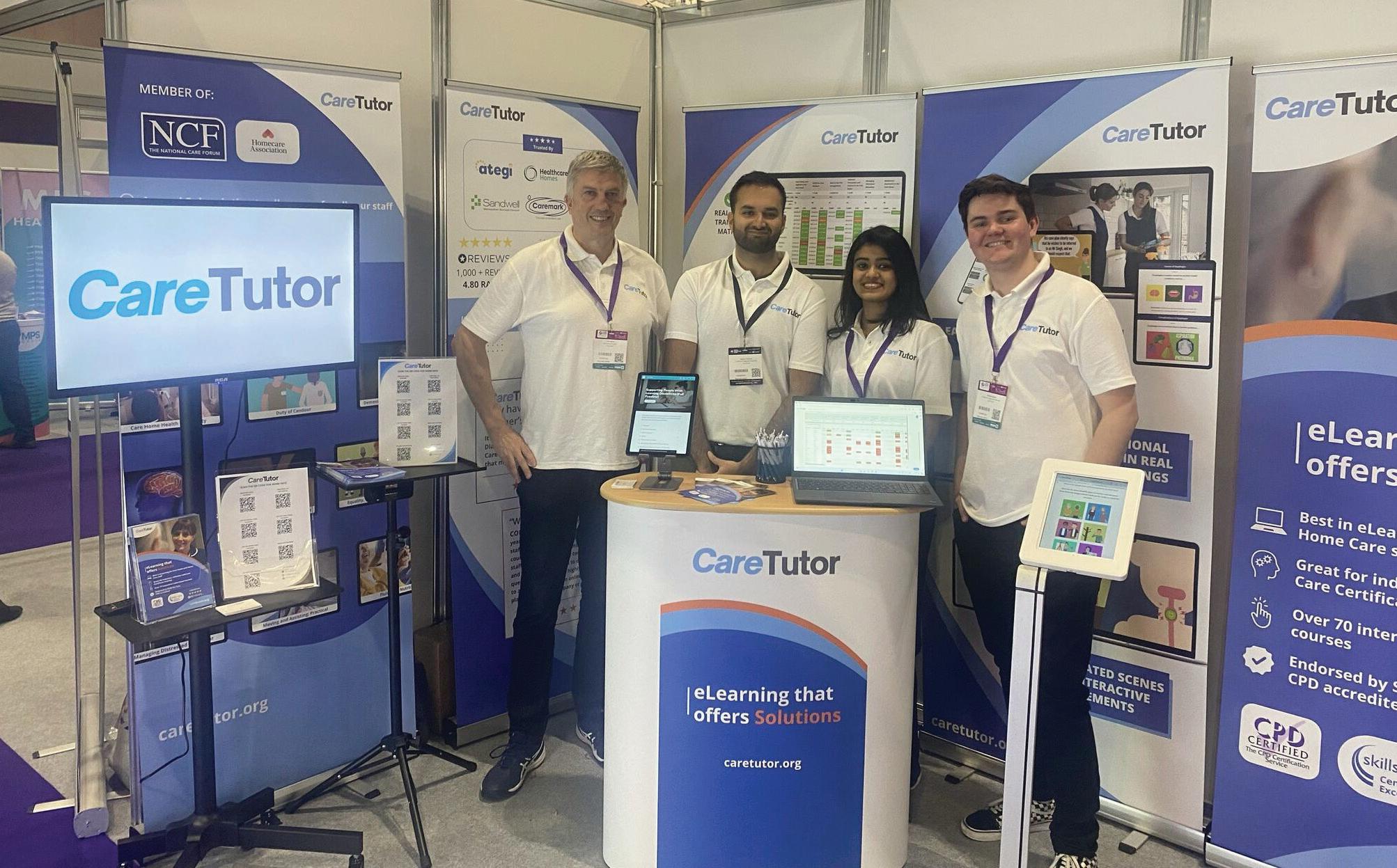
The spectrum of experiences was broad, from VR hot-air balloon adventures to therapy animals. Engaging with care managers from the social care sector offered a deeper understanding of their needs and objectives. Through our conversations with the Care managers, it became evident how our Learning Management System could streamline their tasks, potentially saving considerable time and resources. A particularly gratifying aspect was receiving feedback on our content’s effectiveness in engaging learners and enhancing their learning experience as it involves animated videos and live-action footage. Meeting face-to-face with clients, whose voices we had only heard remotely, added a personal touch to our interactions.
We found immense satisfaction in witnessing our clients’ positive experiences with CareTutor’s eLearning. We were also able to gather some valuable feedback to support our course development process. The networking
opportunities at the show were abundant, with connections made across diverse professional backgrounds. These conversations could lead to potential collaborations and partnerships, enriching our future endeavours.
The CareTutor team had a great time at the CareShow and eagerly anticipate our next participation. We firmly believe that engaging in such exhibitions is not only essential for professional growth but also vital for staying abreast of industry trends. The Care Show has truly inspired us to increase our involvement in similar events. We are now geared up to participate in the Care Managers Show on June 27th & 28th at the NEC, Birmingham. This event is UK’s largest care manager event, with two days of insightful content, CPD training, networking, and entertainment, featuring industry leaders and 150+ exhibitors.
Visit us at stand H32 to connect with our team! See you soon in the coming days. caretutor.org
SHOW REVIEW
carehomemagazine.co.uk 40

Revolutionising Care
Carless + Adams understand that the provision of high-quality care has never mattered more as the UK’s ageing population grows. In line with this, the team exhibited at The Care Show London this year, and below reveal exactly why it was the right decision for them.
Our focus is on the design of the highest quality supported living and care accommodation in the UK.
Carless + Adams’ belief is to create somewhere not only our Mums would like to live, but also where we would like to live – we focus on longevity and promoting independence whilst empowering residents.
We’ve exhibited for many years at The Care Show Birmingham and in April we also exhibited and spoke at The Care Show London. The energy at Excel was buzzing (and that wasn’t just the coffee!).
Melissa Magee, Managing Director + Architect, and George Morris, Director – Architect Technician, spoke at the Business Theatre on refurbishment or preservation v new build and innovation. The session identified that the demand for IRC’s and care homes is fortunately driving change but discussed whether design, development and construction focused on simply erasing the old and bringing in the new. We
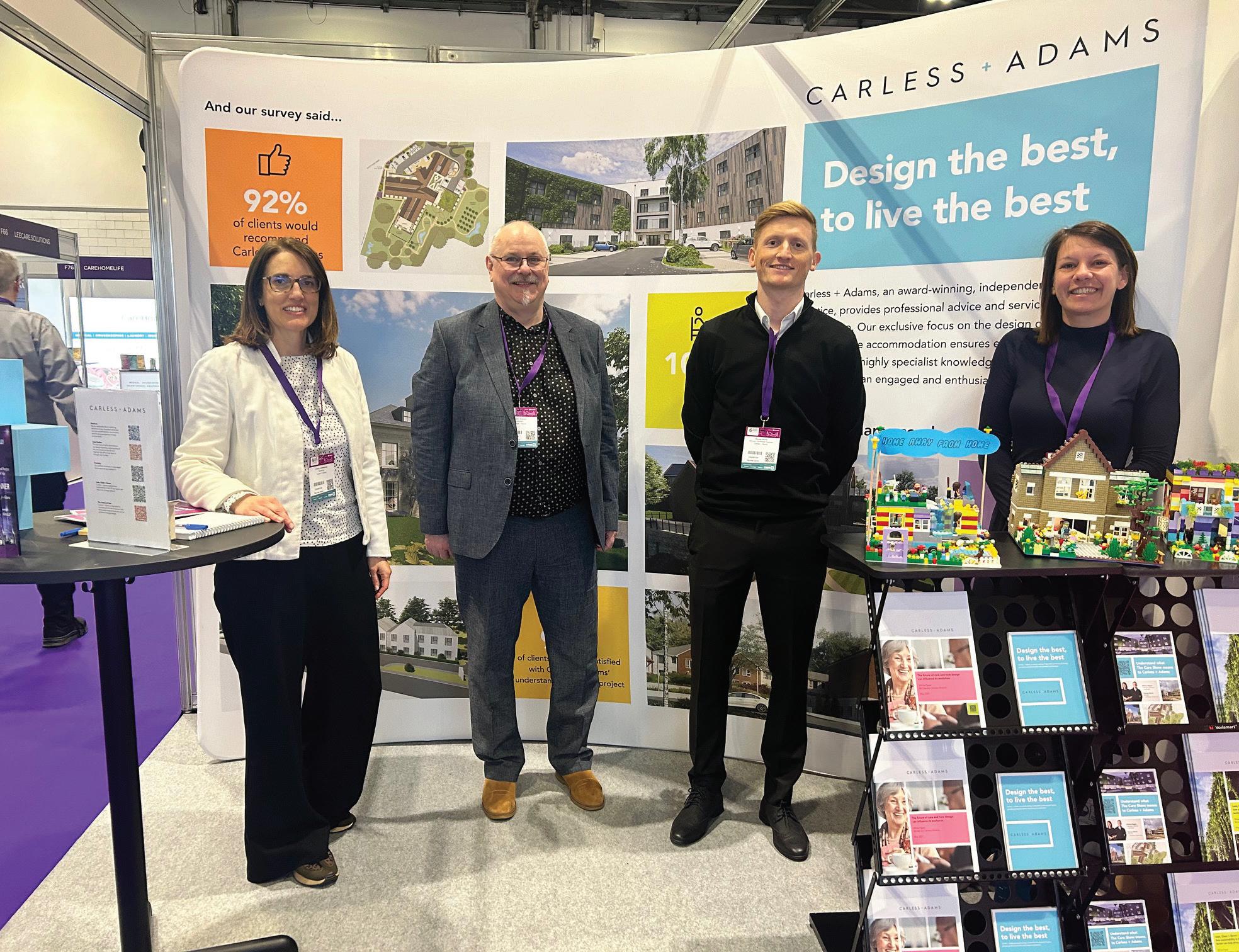
appreciated the possibilities of combining existing structures with innovative new builds and consideration of care standards and how these can be achieved in refurbishments and listed buildings. It was standing room only!
Having the wide selection of care industry providers in one
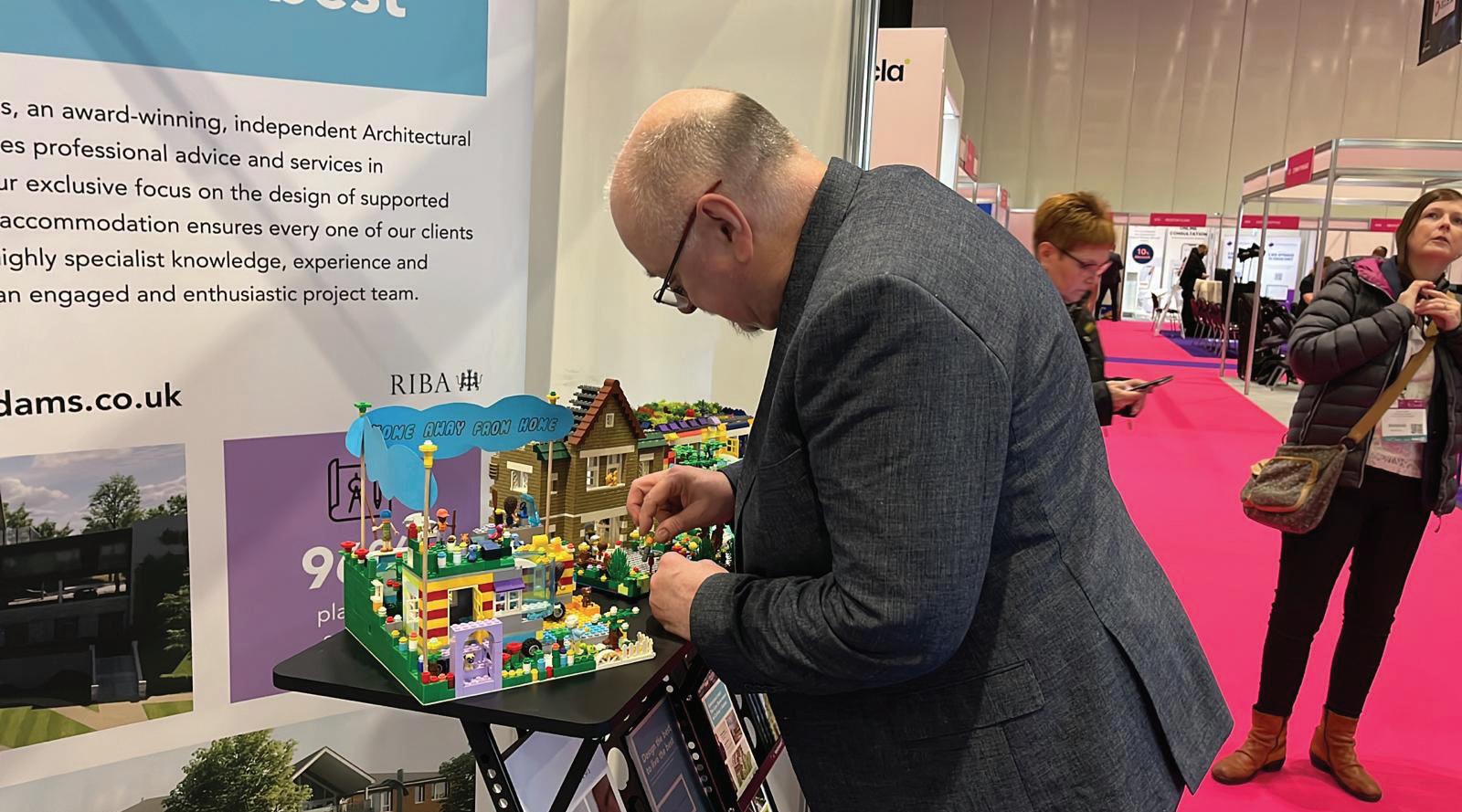
exhibition hall meant we were able to concentrate our time in speaking with them. Valuable conversations were had with businesses, even if not obviously directly related to our own, and being surrounded by passion for care meant every conversation was powerful.
Exhibiting and speaking at The Care Show London was the right decision for Carless + Adams. Excel was a great venue for the event, from the other wide selection of exhibitor stands, speaker selection and topics covered to the ease of transport to get there.
Having presence at the show meant we were able to have designated meetings with existing contacts and also have a focal point for new contacts. Being in such an environment lent itself to more relaxed conversations which enabled us to demonstrate our experience and knowledge without
SHOW REVIEW
carehomemagazine.co.uk 42
being too intense.
The Carless + Adams stand captured imaginations and generated in-depth discussions over our display. Prior to the event we had challenged each of our teams of Architects and Technicians to design a care home of their choice out of Lego… and they did not disappoint! Lego seems to be a universal language – perhaps it’s engaging our inner child – everyone who walked past stopped for a chat, whether interior designers to care workers to CEO’s of care operators. We of course were happy to talk everything care (and to listen to some strong opinions on Lego and the care home designs we had created!).
The best debates came from posing the question of what Lego care home would they like to live in. It unveiled some detailed conversation about their retirement years and what they would like to do with their time. Queries on whether their dogs could live with them, whether they could host and cook for their family and how much gin was available were made (won’t mention the person who asked if they could be naked all day!).
Retirement living can be whatever you want it to be and IRC and care home design can enable this.
Attending The Care Show is
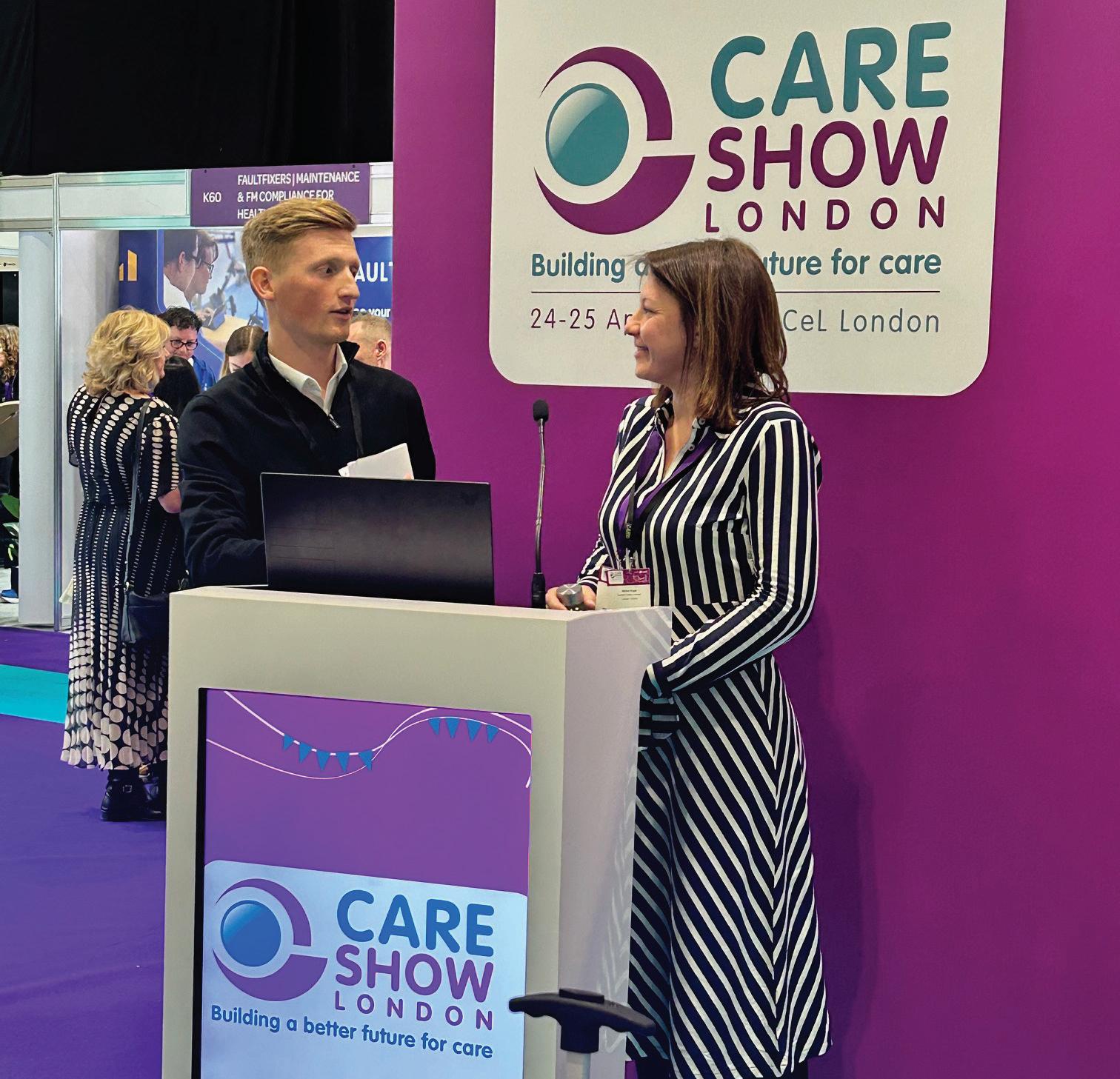
always thoroughly worthwhile, none more so than when doors open due to your presence. Our passionate mission is to redefine retirement living and care accommodation communities by using design to change perceptions of these environments. Being able to talk about this and demonstrate how we are doing this continues to fill
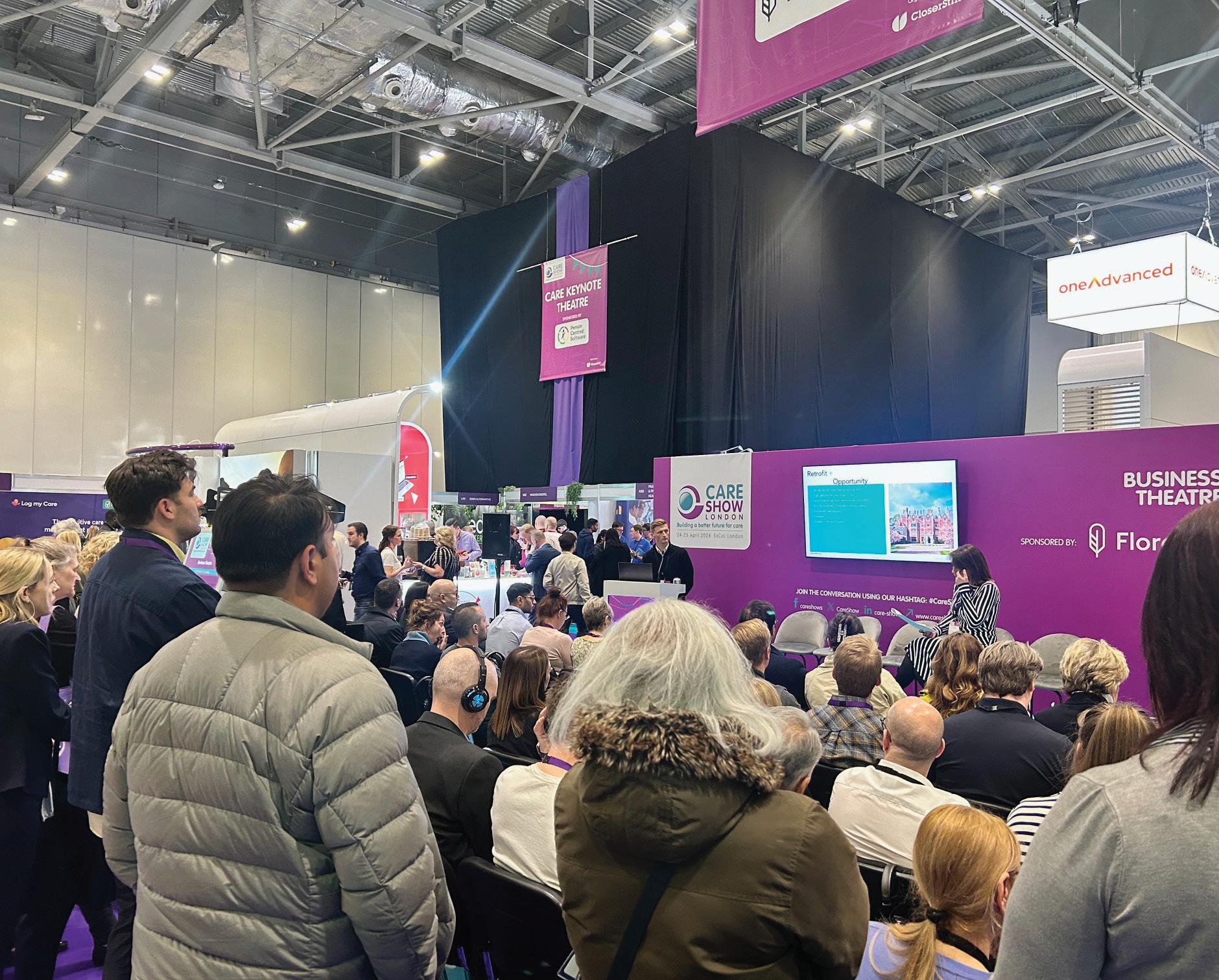
us with enthusiasm, excitement and positivity. Roll on Birmingham!
www.linkedin.com/company/ carless-adams-ltd/ www.instagram.com/carless_ adams/ www.facebook.com/ carlessandadams
Carless + Adams is exhibiting at The Care Show Birmingham on 9th + 10th October 2024. Melissa Magee, Managing Director + Architect, will be part of a panel debate on day one at the Design, Build and Environments Theatre discussing ‘Dementia Design: Comfort or Practicality’. Melissa will be presenting with George Morris, Director –Architect Technician, on day two on the Retirement Living stage presenting (and welcoming Q&A’s) on ‘Designing for ourselves: longevity, retirement and embracing the future’.

SHOW REVIEW carehomemagazine.co.uk 43
Sponsorship Made Simple
After recently exhibiting London’s Care Show, we share a piece from Borderless, looking at how the brand is streamlining sponsorship in the care sector.
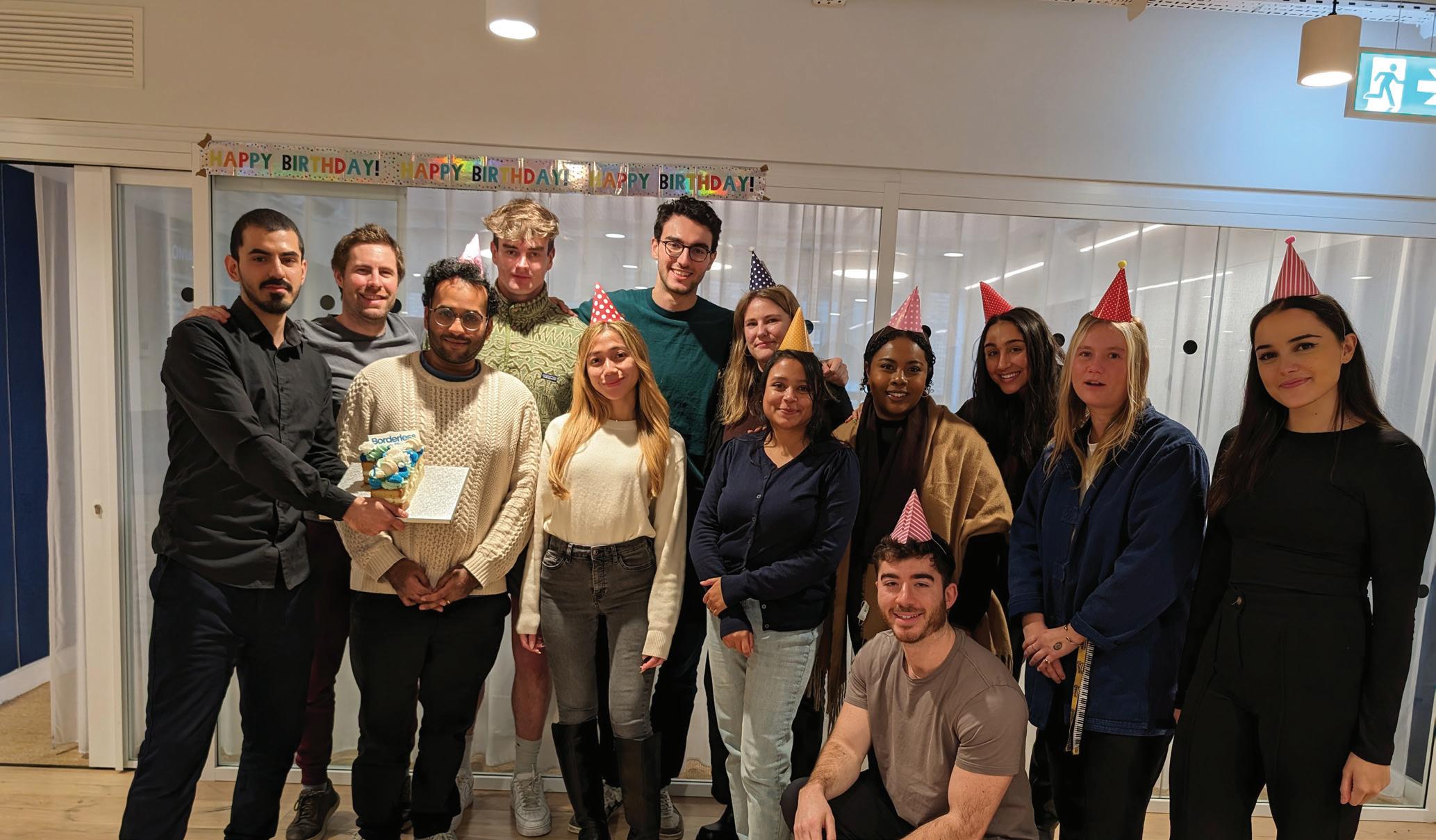
After an exciting few days as an exhibitor at the Care Show London and connecting with providers across the UK, we are taking a moment to reflect on the incredible growth of Borderless over the past 18 months.
Founded in December 2022, Matthew and Jonathan met at Entrepreneur First. After witnessing the exorbitant fees charged by third parties to employers and candidates alike, they envisioned a world where borders are no longer barriers, and anyone can move anywhere seamlessly and safely. Sponsorship doesn’t have to mean bewildering Home Office
This means HR professionals can avoid wasting countless hours and resources becoming sponsorship experts.
bureaucracy, expensive third parties, or long timelines - which is why we started Borderless. We’re here to make sponsorship effortless for care providers and overseas workers, helping to eliminate exploitation and improve transparency.
Our comprehensive technology platform, combined with human expertise, supports employers and
candidates end-to-end. This means HR professionals can avoid wasting countless hours and resources becoming sponsorship experts. Instead, they can rely on Borderless to handle every detail. We offer sponsor licence applications, 1-click visa processing, and ongoing compliance, all backed by our stateof-the-art technology platform and a dedicated team of in-house
SHOW REVIEW
carehomemagazine.co.uk 44
immigration experts.
As of April 2024, Borderless proudly supports over 250 care providers and has facilitated sponsorships for more than 2,000 candidates. We are also thrilled to announce a recent significant milestone, we were awarded a UK government contract to deliver our platform within the South East region. In partnership with SESCA (South East Social Care Alliance) and Oxfordshire County Council via the Oxfordshire Innovation Hub, the platform will become available to more than 4,500 care providers across the region, handling all aspects of recruitment, immigration, and compliance.
This award demonstrates the care sector’s commitment to improving standards. The UK faces an ageing population, a growing modern slavery crisis, and the impact on employers, care staff, and service users has already been significant. Without better solutions, the situation will only get worse. Migrant workers and care providers now have access to the UK’s most comprehensive platform for ethical, affordable, and reliable international recruitment, immigration processing, and sponsorship compliance, fully supported by an expert team.
As we look to the future and what’s next for Borderless, we are excited to grow our team, positively impact the lives of candidates, and further streamline sponsorship for the care sector and beyond.
Interested in learning more?
Speak with our team today to discover how Borderless can reduce the time, costs, and complexities associated with sponsorship.
www.getborderless.io/signup-asemployer hello@getborderless.co.uk 0330 808 0086




“Borderless removes process headaches. Because everything is transparent, we trust Borderless to guide us through sponsorship and maintain Home Office compliance. So we can get back to focusing on our core business.” - Adam, Managing Director, Belmont Healthcare
SHOW REVIEW carehomemagazine.co.uk 45
Client Testimonial
Accounting

Intracare
benjones@intracare.co https://intracare.co Intracare Ltd
Care Home Equipment

Care Supply Store
01375 651 609
www.caresupplystore.co.uk

@caresupplystore
Care-SupplyStore-708536899310571 care-supply-store
Coffee Solutions

JDE Professional UK
0808 100 1030
www.jacobsdouweegberts professional.co.uk
Food Services


allmanhall
01225 745520
hello@allmanhall.co.uk www.allmanhall.co.uk allmanhall
Signature Dining
T: 07714 710707
E: paul.r@signature-dining.com
T: 07738 981860
E :sarah.h@signature-dining.com www.signature-dining.com
Interior Design
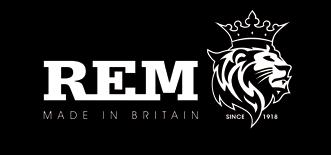
Laundry

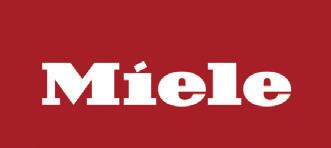
REM 01282 619977

sales@rem.co.uk www.rem.co.uk @remuklimited remuklimited rem-1
Girbau
01462 427780
sales.uk@girbau.com www.girbau.com Girbau girbau-uk
Miele
0333 230 1347
professional.sales@miele.co.uk www.miele.co.uk/pro/care miele-professional
Procurement

EF-group
07837 212719
stevewalker@ef-group.co.uk
ef-group.co.uk/healthcare ef-group-social
Remote Health Monitoring
August International
01920 487700
audarhealth@augustint.com www.audarhealth.com/home/ carehome
carehomemagazine.co.uk
Directory 46


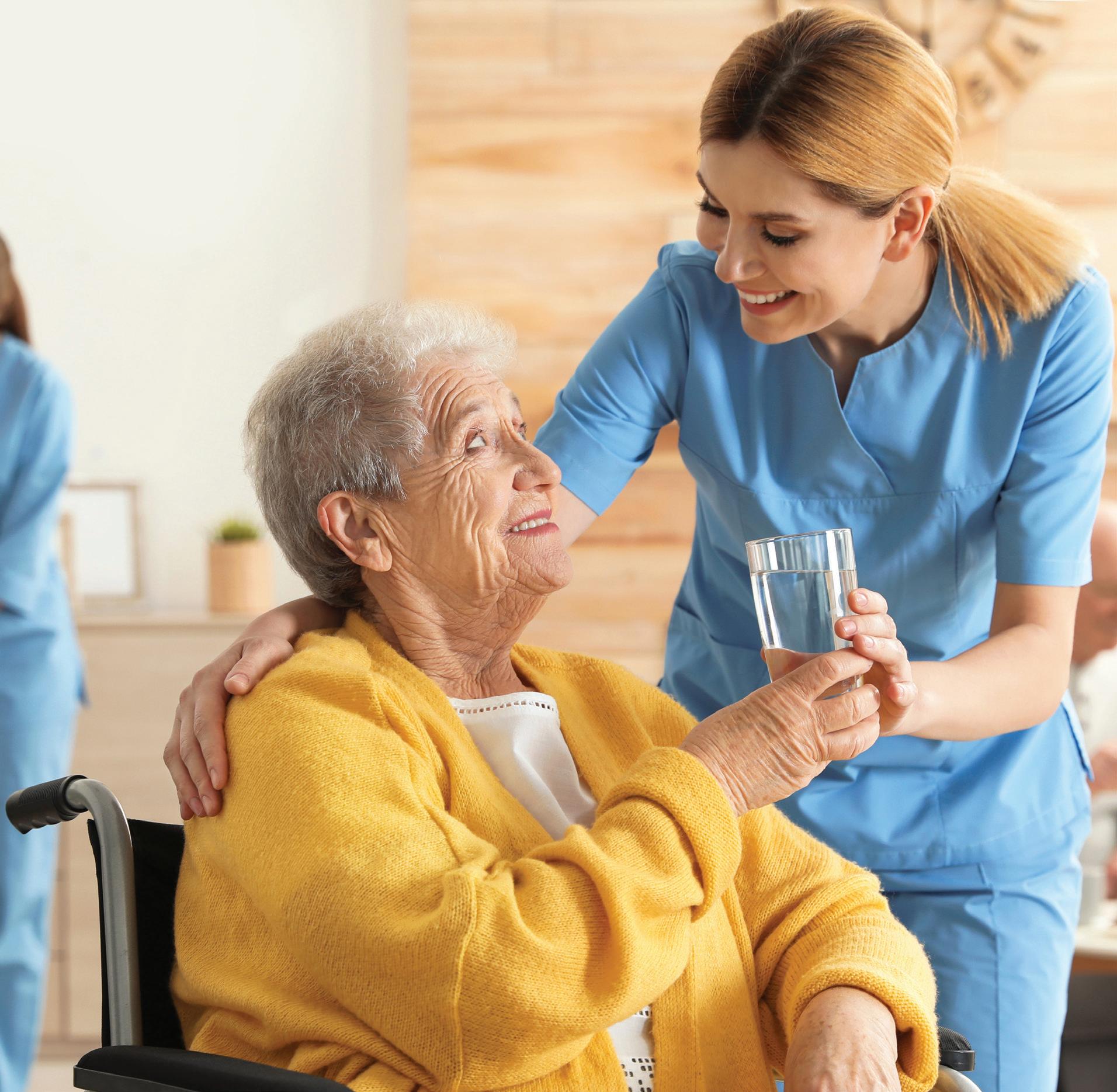
The UK’s most comprehensive selection of care home supplies Over 30,000 products available online 01375 651 609 caresupplystore.co.uk

































































































































































































